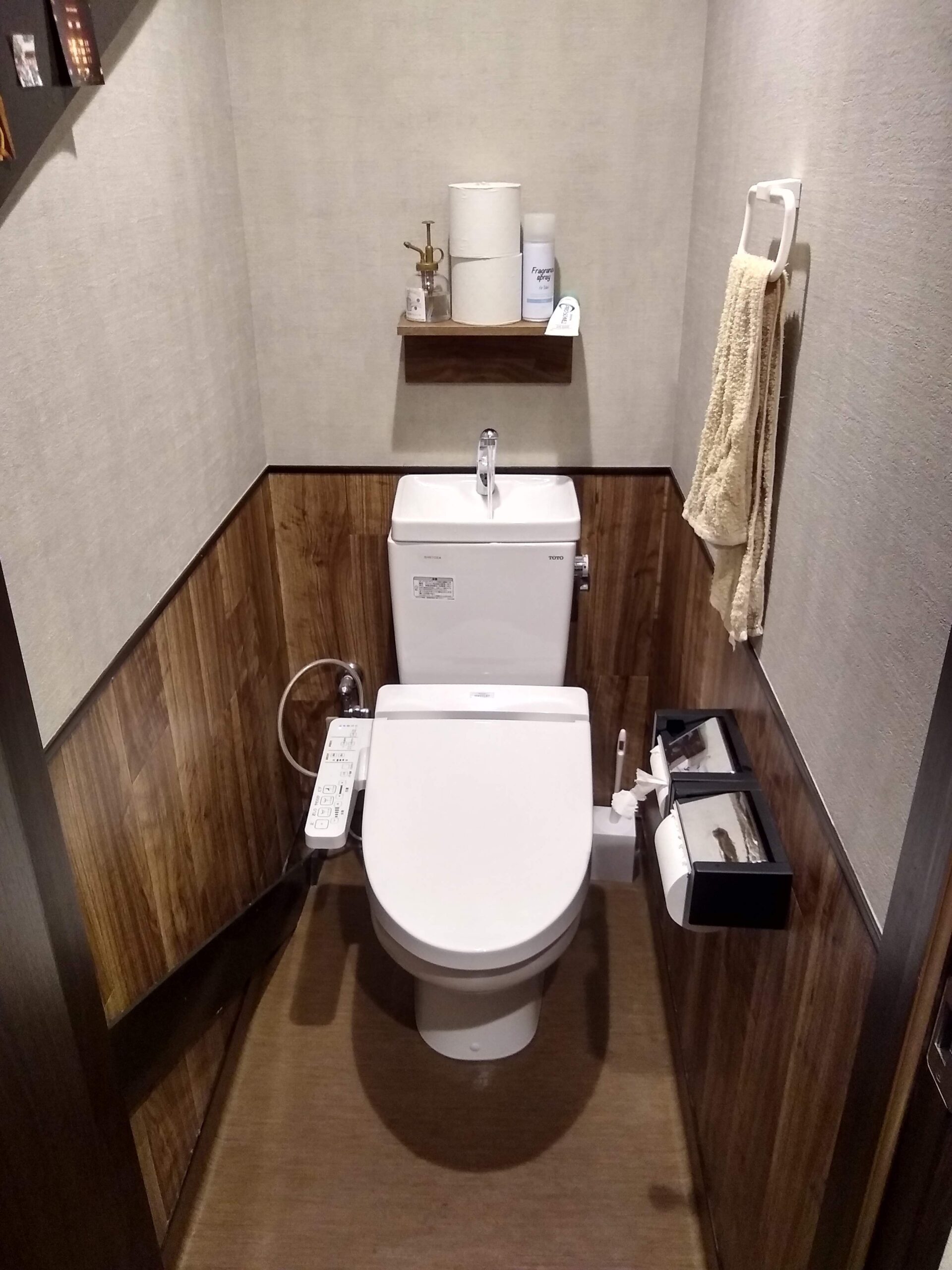It’s finally time to say goodbye to Tokyo and Kon’nichiwa to the rest of Japan! Our original plan was to head north into the Japanese Alps after leaving Tokyo, but the weather in the mountains called for 7 straight days of rain and storms – we weren’t too encouraged by that and, on the advice of the guidebook, we opted to skip almost everything else in central Japan and go basically straight to Kyoto with just a few stops for castles and palaces along the way. At the time, we felt pretty defeated to be skipping yet another awesome section of mountains for bad weather (looking at you, Pyrenees!), and we were also reluctant to leave Tokyo behind when there was so much left to see, but in the end it (mostly) worked out. So hold onto your butts and keep both arms inside the car at all times, we are taking the bullet train to Nagoya!
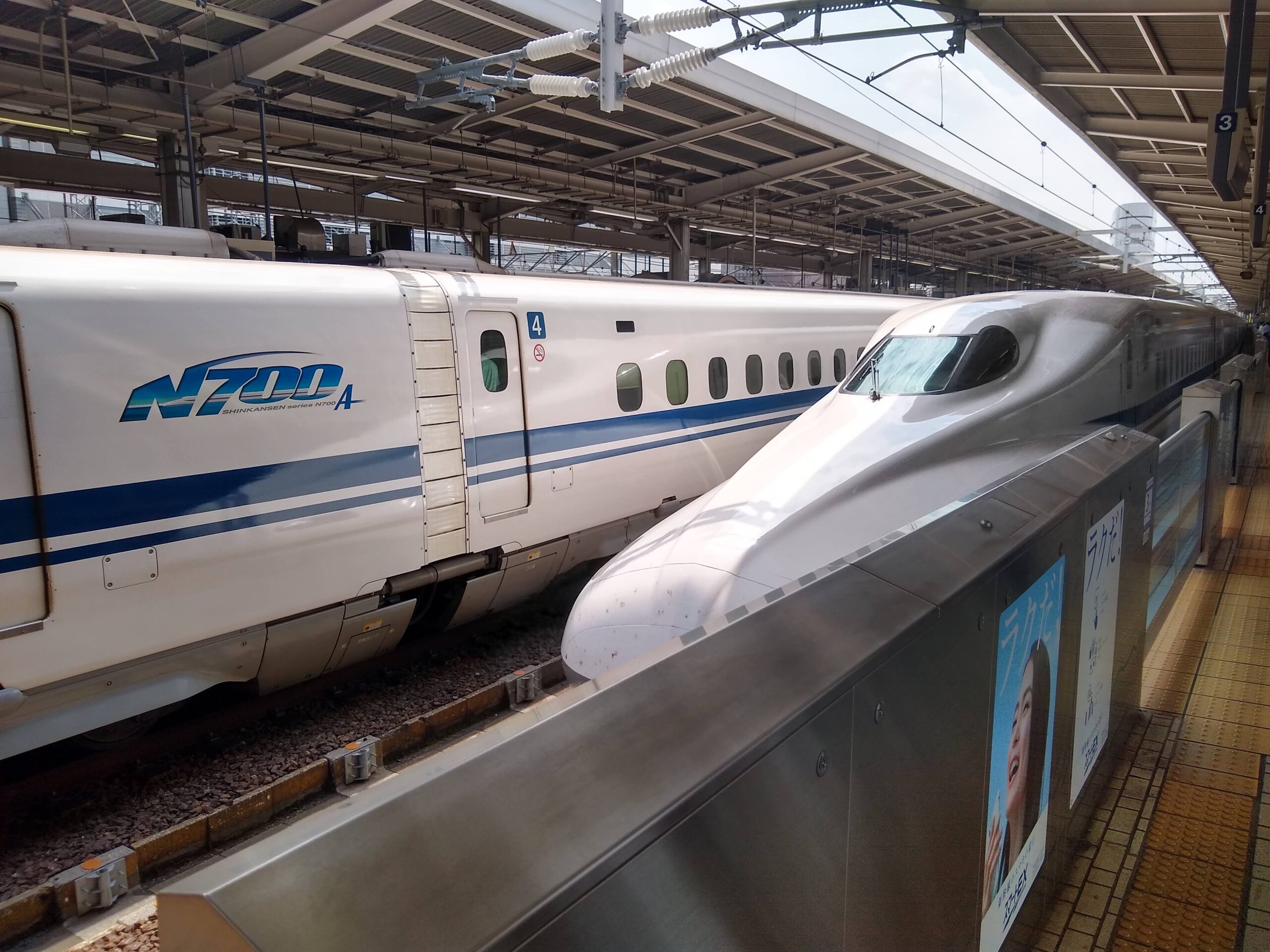
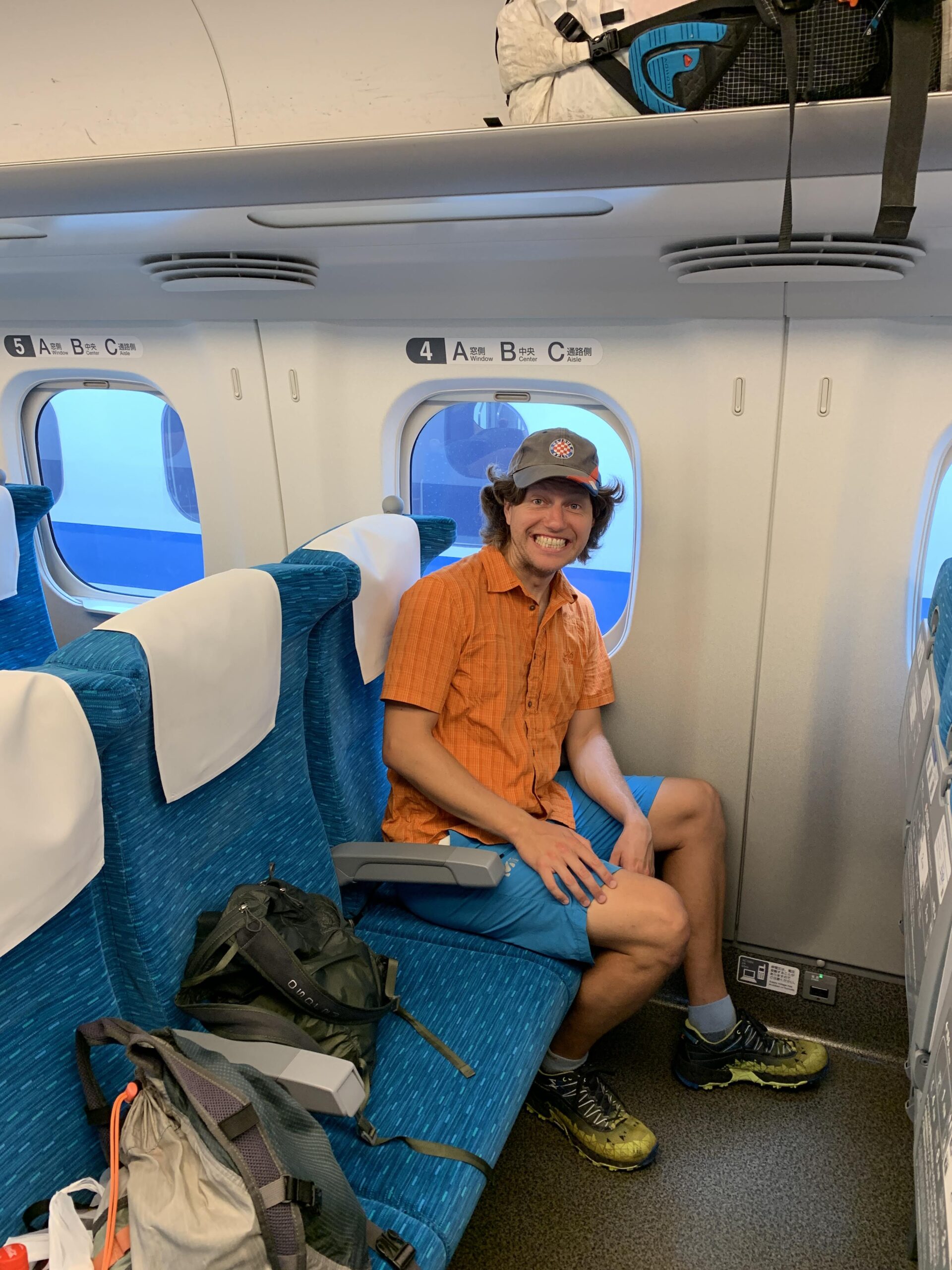
Jon possessed only a vague sort of curiosity about riding the Shinkansen (the name in Japanese), but I was giddy as a school boy. I knew from reading that Japanese bullet trains can casually pull 200mph on their daily trips, so in my mind we were going to buckle in like jet pilots on some tiny, exclusive rocket train and blast across the Japanese countryside. I’m certain my version would have been cooler, the Japanese version was perhaps a bit more practical. From the outside it was just a pointy commuter train catering to daily users. Along with a bunch of archetypal Japanese business men, we just boarded it like a regular train and sit down in a regular seat, not even distinguished by seat belts. There wasn’t much to be impressed by – until we left the station.
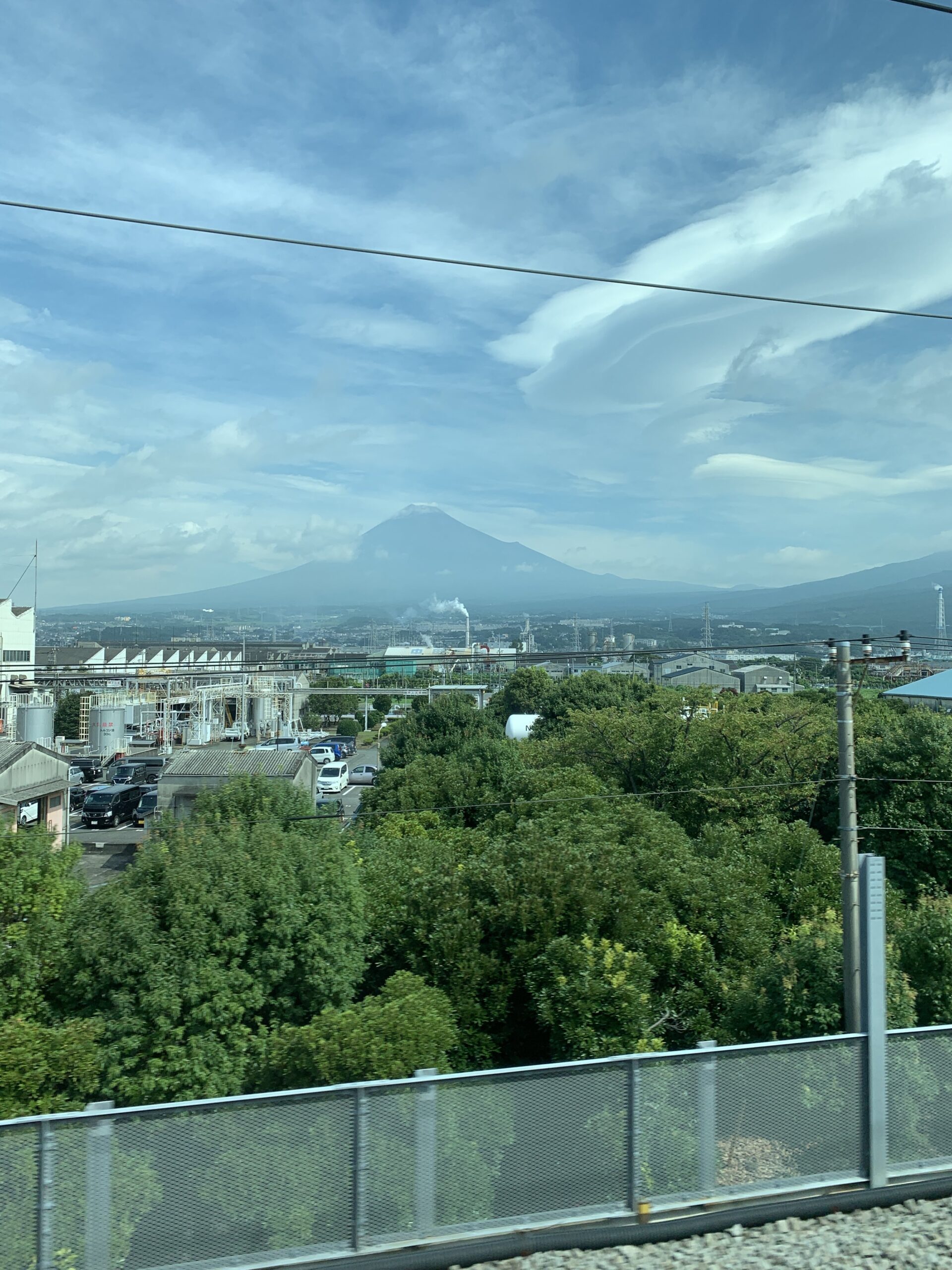
The acceleration was so seamless, the ride was so smooth, that we just set our coffee cups on the fold out trays without even needing cup holders – at speeds frequently topping 150mph. The only thing out of place in an otherwise casual train ride was the view out the window of the scenery blurring past far too crazily. For clarity, the whole ride isn’t 200mph because there are stops, but in total we covered the 240 miles from Tokyo to Nagoya in little more than 2 comfortable hours including 5 or 6 stops. That put us in Nagoya before lunch, which was just in time to get back on the regular-speed train and leave, since our first stop in Nagoya was actually in the suburbs north of the city at Inuyama Castle.

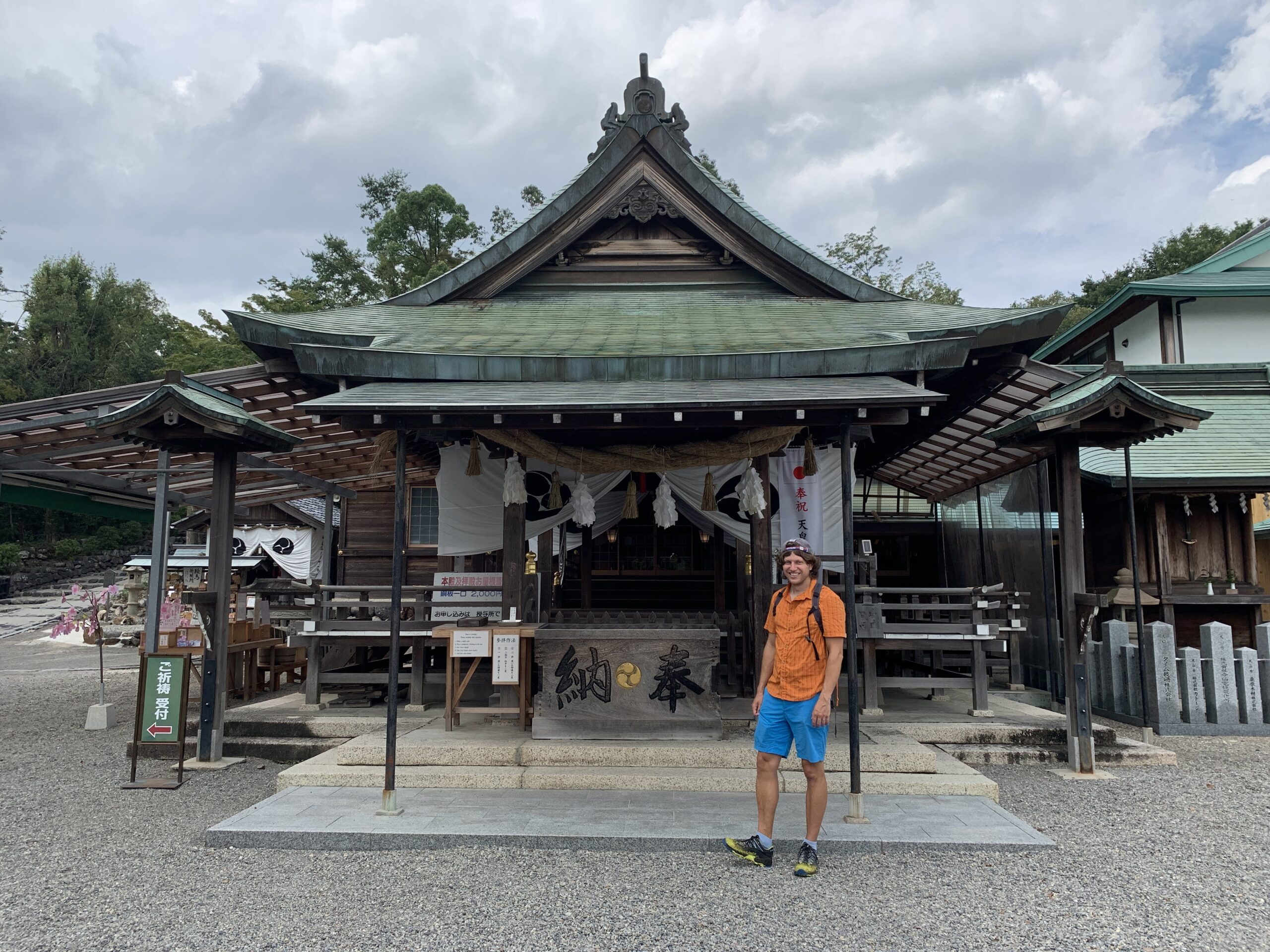
Inuyama Castle is usually agreed to be the oldest castle in Japan (of course there’s some debate), but at minimum it’s one of only 12 “original” Japanese castles in existence and a real, living piece of living Samurai history. It took us over an hour to get there on the slow train – a journey of just 20 miles to compare it to the bullet train – then a 30 minute walk from the train station up the hill to the actual castle. When we finally arrived to find the whole castle totally obscured by scaffolding and undergoing extensive renovation, you might say we were a tad disappointed. We tried to make the best of it by touring the inside, but it was strangely empty and all the signage was in Japanese. With our morning expended and little to show for it, we slowly made our was back to the train station. On our way we made a brief stop for huge tubs of shaved ice, which made us feel a little better.
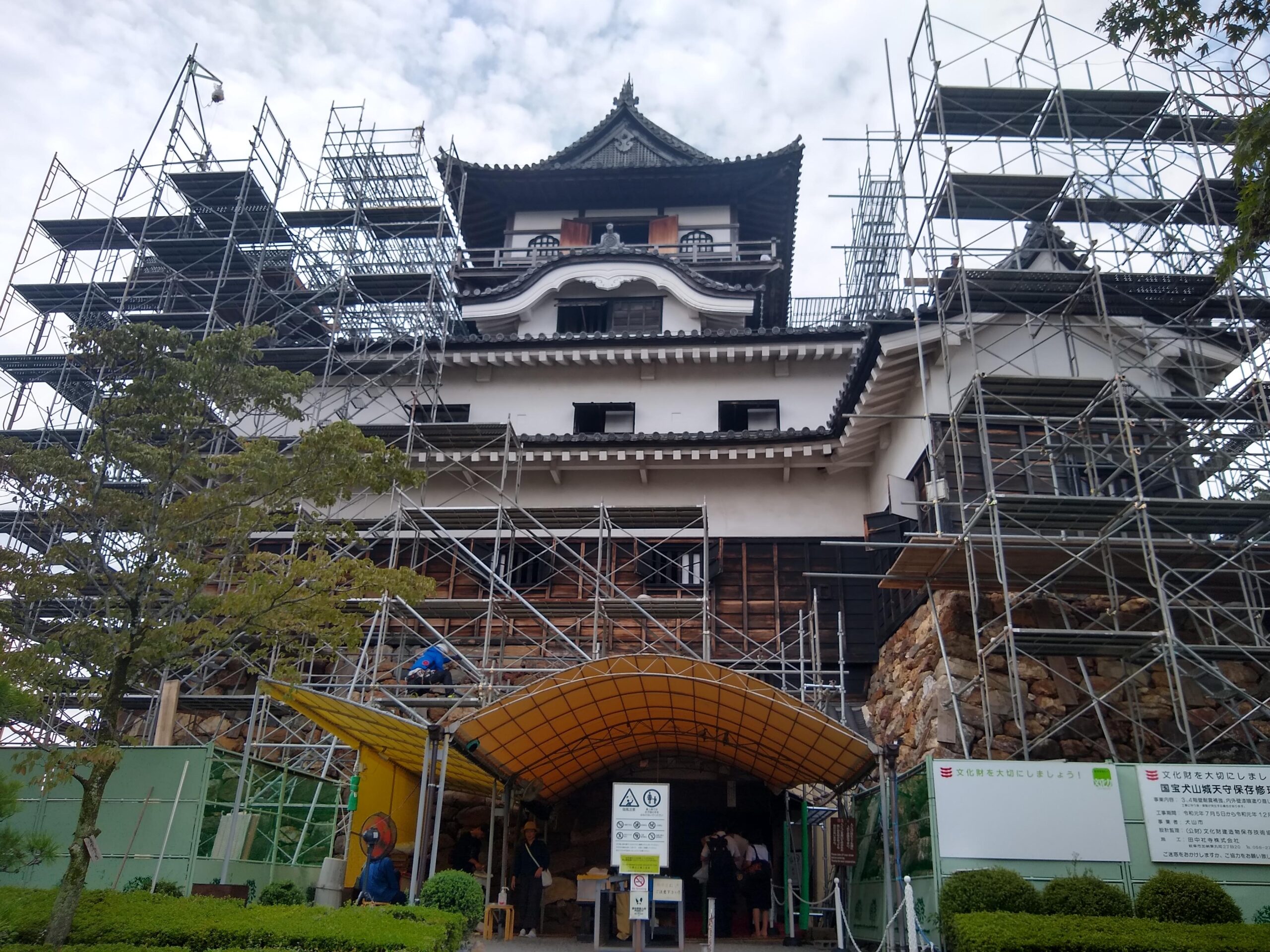
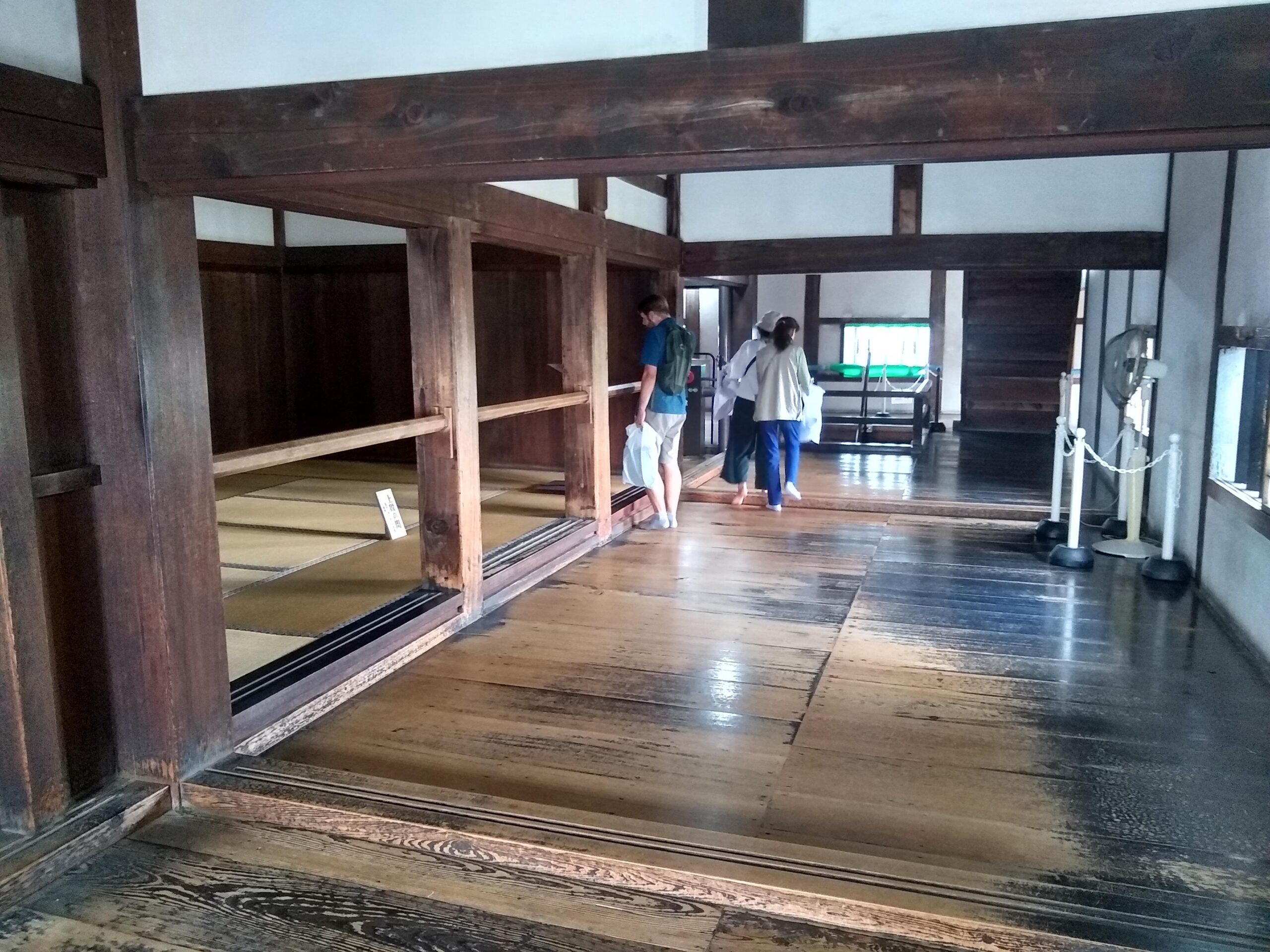

Despite the long trip to and from Inuyama, we found ourselves back in Nagoya with more daylight left than expected. By chance, Jon spotted “Nagoya castle” on googlemaps, and suggested on a whim we try that one out. I poo poo’d the idea, saying Nagoya castle is just a reconstruction – not a grand original like Inuyama – but he eventually talked me into it. Fortunately for us both, I was completely wrong to judge. The castle complex at Nagoya turned out to be one of the highlights of the trip. Sure, it’s a reconstruction, but it’s a fabulous one that taught us a ton about Japanese design and architecture. And while the castle was cool, the unexpected highlight proved to be Hommaru Palace, the castle’s neighboring palace complex. It too is a reconstruction of the original famous palace, which was originally built to demonstrate the splendor and of the Shoguns. Let me tell you, it’s splendorous.
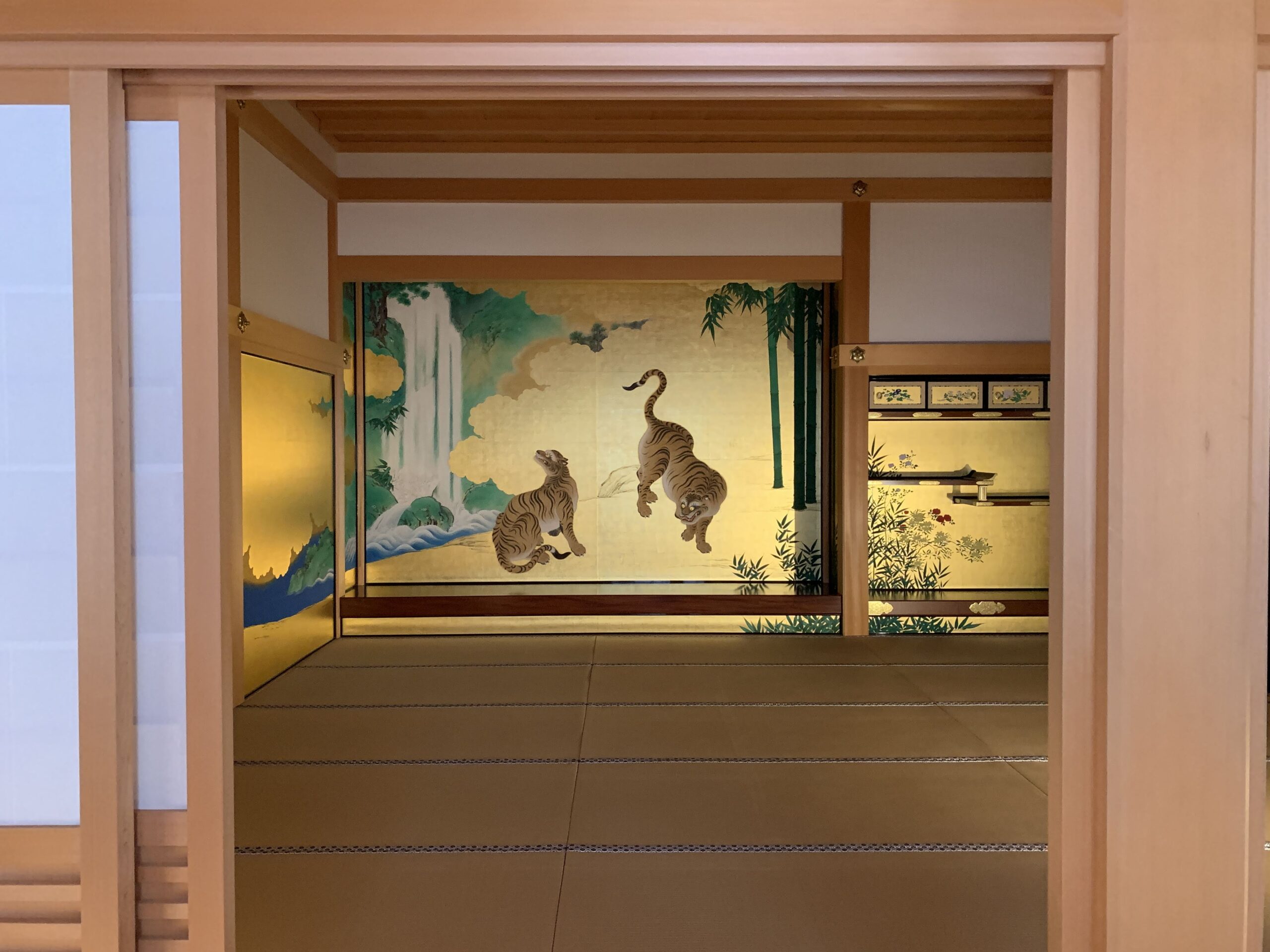
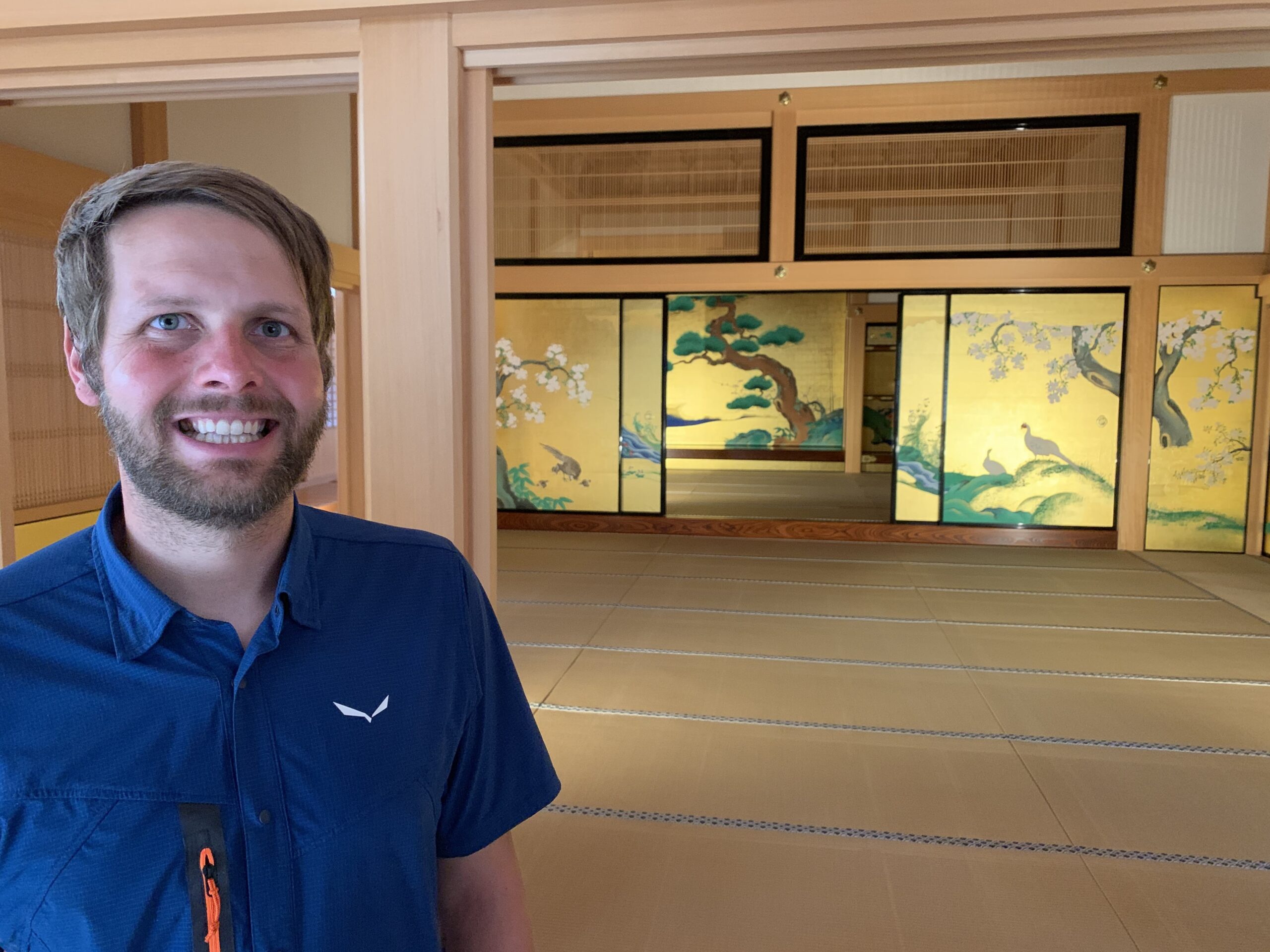
The artwork in Hommaru Palace was incredible. The gilding was legendary. The detail in the metal and woodwork was as good as the Doge’s palace in Venice. Perhaps though, the most interesting part is in what you don’t see – just to reiterate, this is a palace. It was built in the 1600’s for some of the most powerful figures in Japan (the Shogun and his Samurai). Compare this to the Hofburg in Vienna (where we were just weeks ago!), that sprawling mountain of a building with hundreds of rooms, featuring elaborate statues of naked Hercules and drunk Neptune adorning it’s huge, marble gates. That thing was built around the mid 1500’s, and I doubt the Habsburgs were sitting on the floor with nothing but a gilded rice screen between them and the next room in 1600.
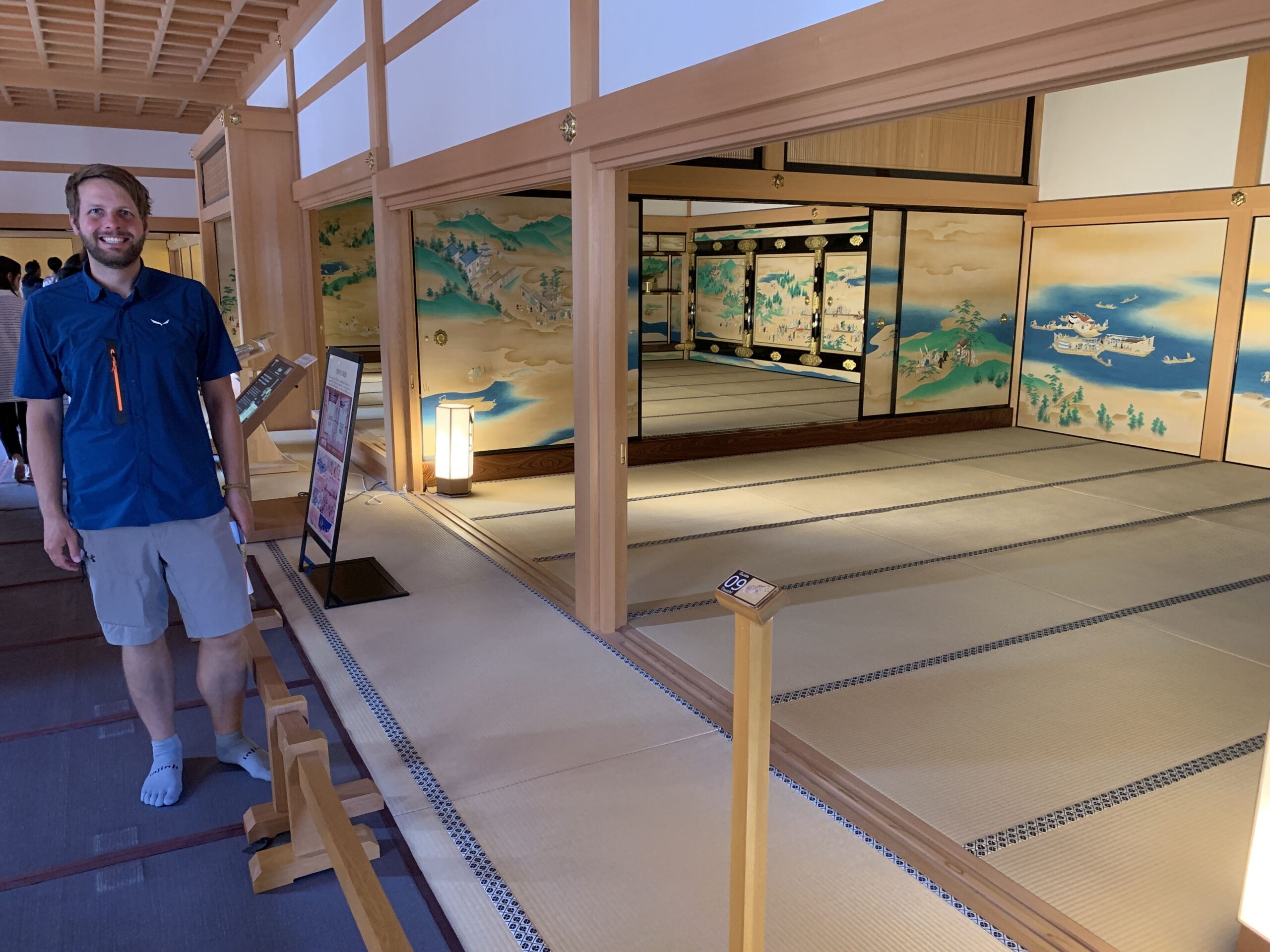
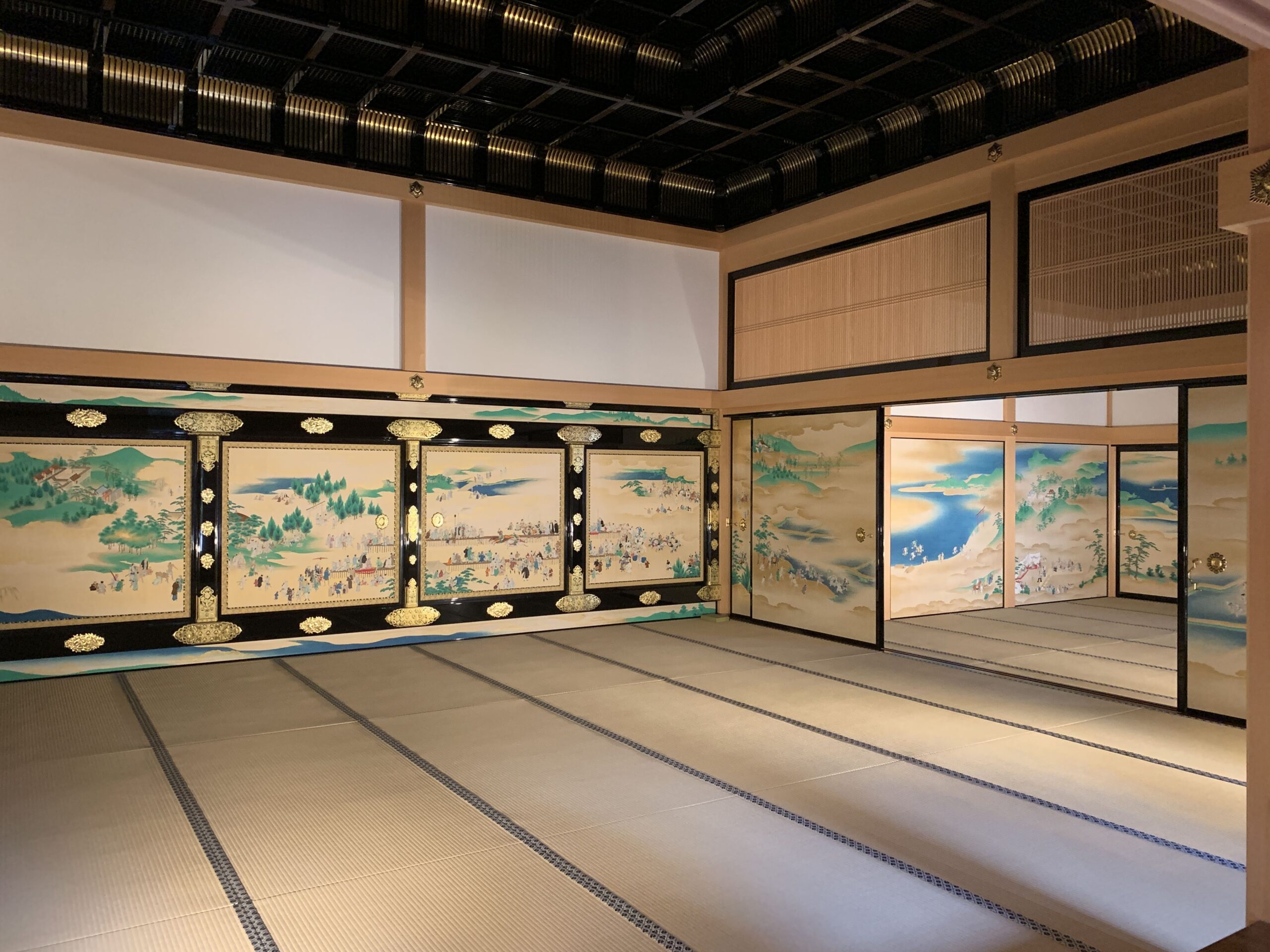
It’s a remarkable testament to the strong influence of Confucianism on the Shogunate, where focus on worldly possessions was taboo and austerity was considered a virtue – even for the ruling class. For instance, there are no beds because everyone, even the Shogun, slept on carefully arranged woven mats (called Tatami mats) that they would roll out each night. Which is also why the rooms are mostly blank squares – because Western style furniture was completely absent. Anyway, it was great learning opportunity about Japanese culture.
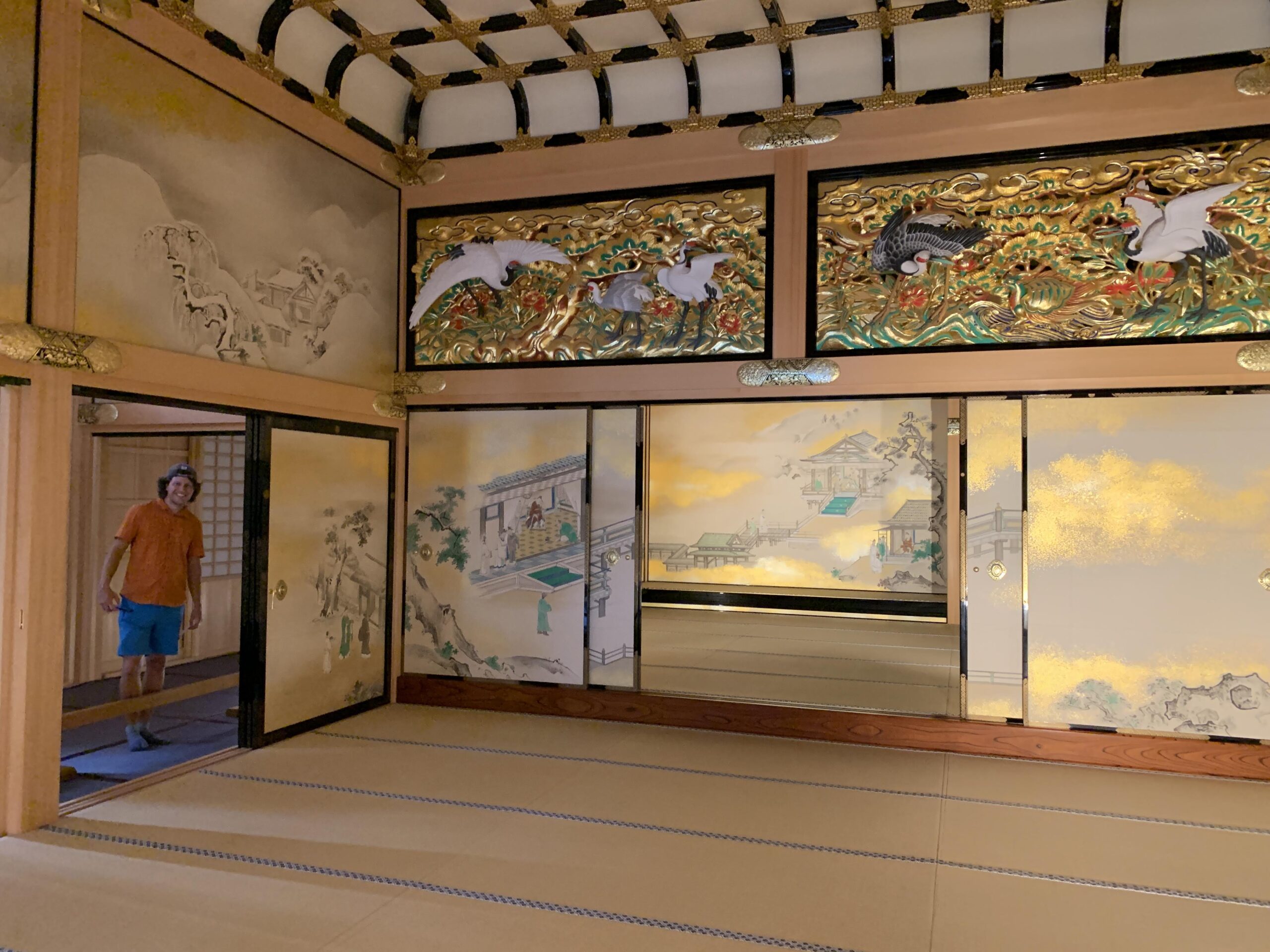
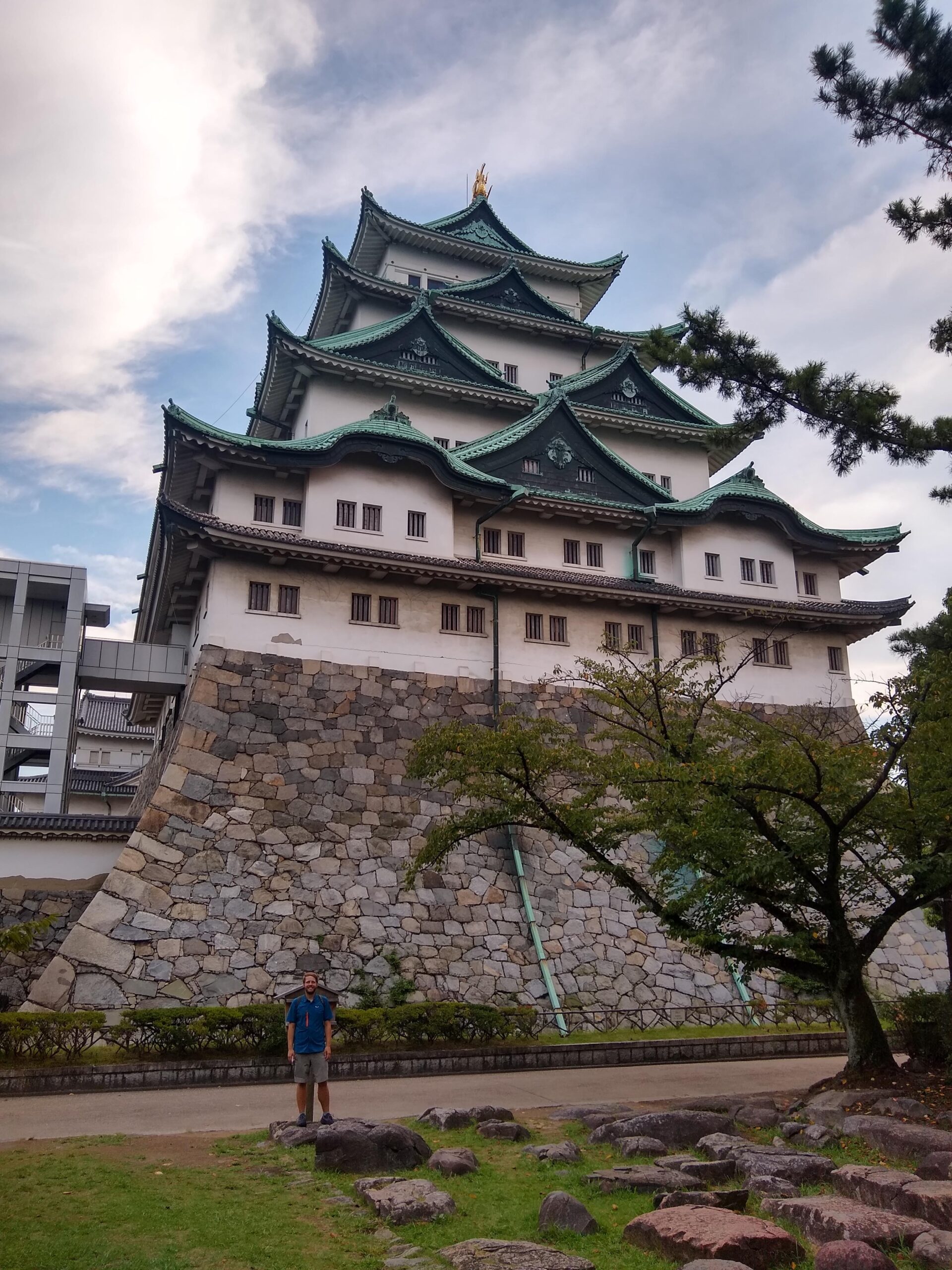
After the palace we wandered over to Nagoya castle itself, but the inside was undergoing renovation and we were not allowed inside. We gathered at this point that damn near everything in Japan was being renovated in preparation for the 2020 Olympics, so this isn’t the last time that happened. Anyway, after that we called it a day and checked into our hostel for the evening. The next morning we hopped back on the (slow) train to visit yet another famous castle complex, Hikone Castle, on our way to Kyoto. Hikone (pronounced He-cone-eh, for those of you from the South) is another of the famous 12 original castles. It’s not the oldest, but it is among the most intact, so we were excited to visit.
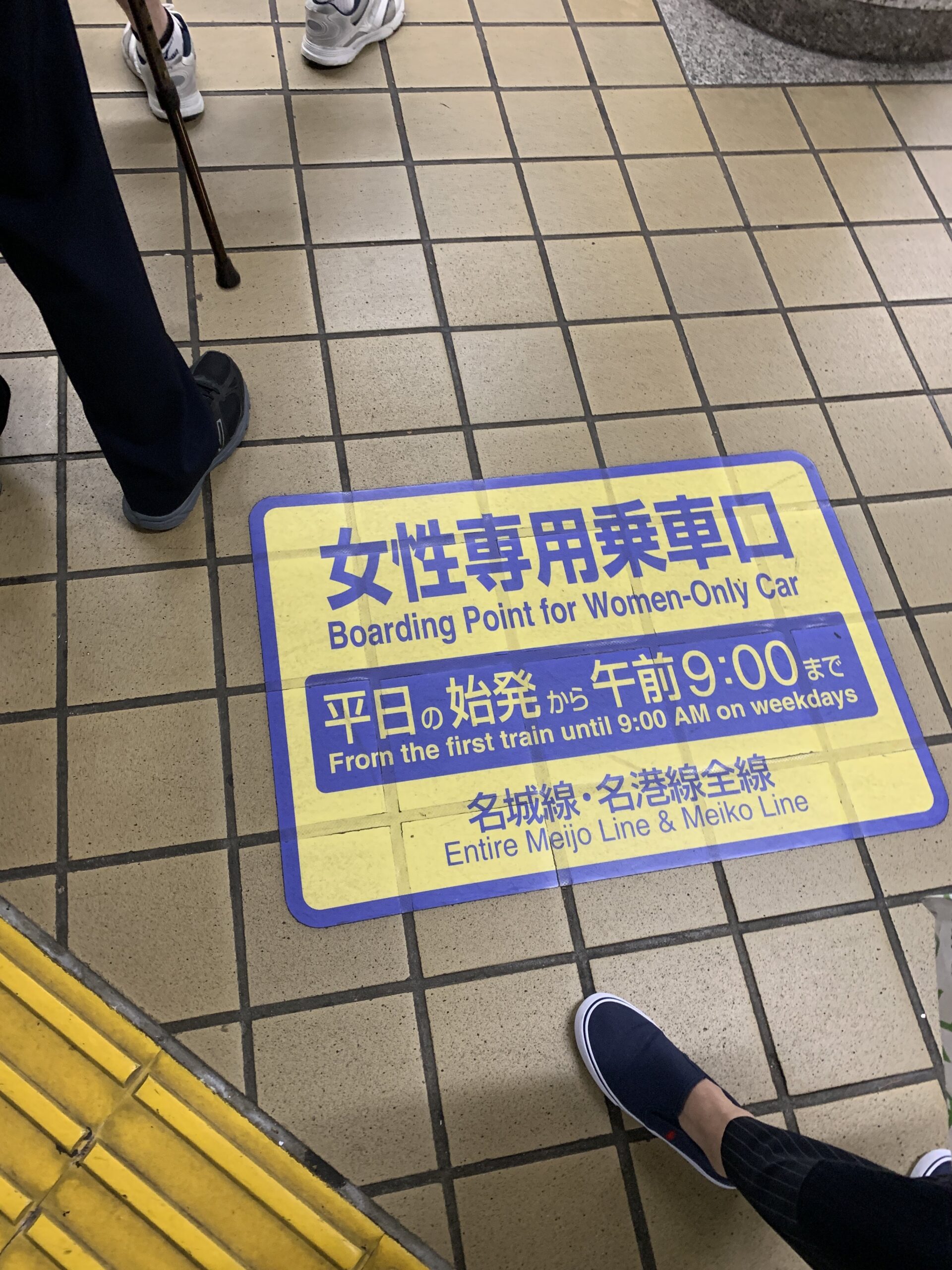

First stop was the attached palace, simply Hikone Palace. This one had been converted to a rather routine museum, so it wasn’t the same show stopper as Hommaru. However, it does house one of Japan’s more famous Samurai armor sets, the “Red Devil” armor of General Ii Naomasa, so not all was lost. The helmet horns are replicated all over Samurai related media, including on an otherwise benign cat creature we ran into later. From the museum, we walked over to, and inside of, Hikone Castle itself. Like Inuyama, it was strangely empty on the inside, but perhaps that’s only because we are used to cannons on display and Western furniture when we visit castles, not square wooden rooms designed for tatami mats. After the castle, we took a long walk through the nearby castle gardens just to relax and enjoy the view. They were nice, of course, and a good example of Japanese landscaping, but the real surprise came when we followed the sounds of cheering and amplified music.
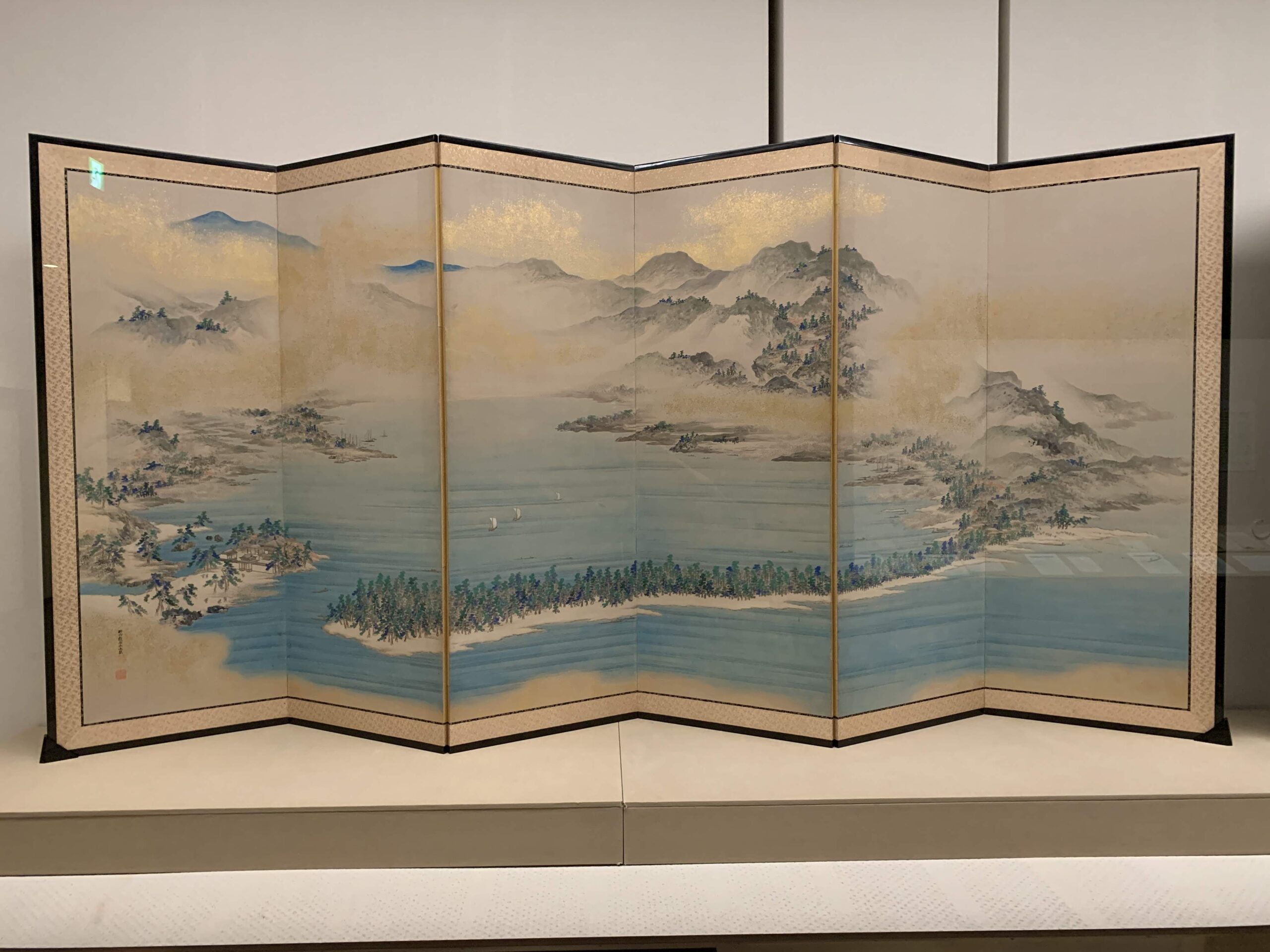
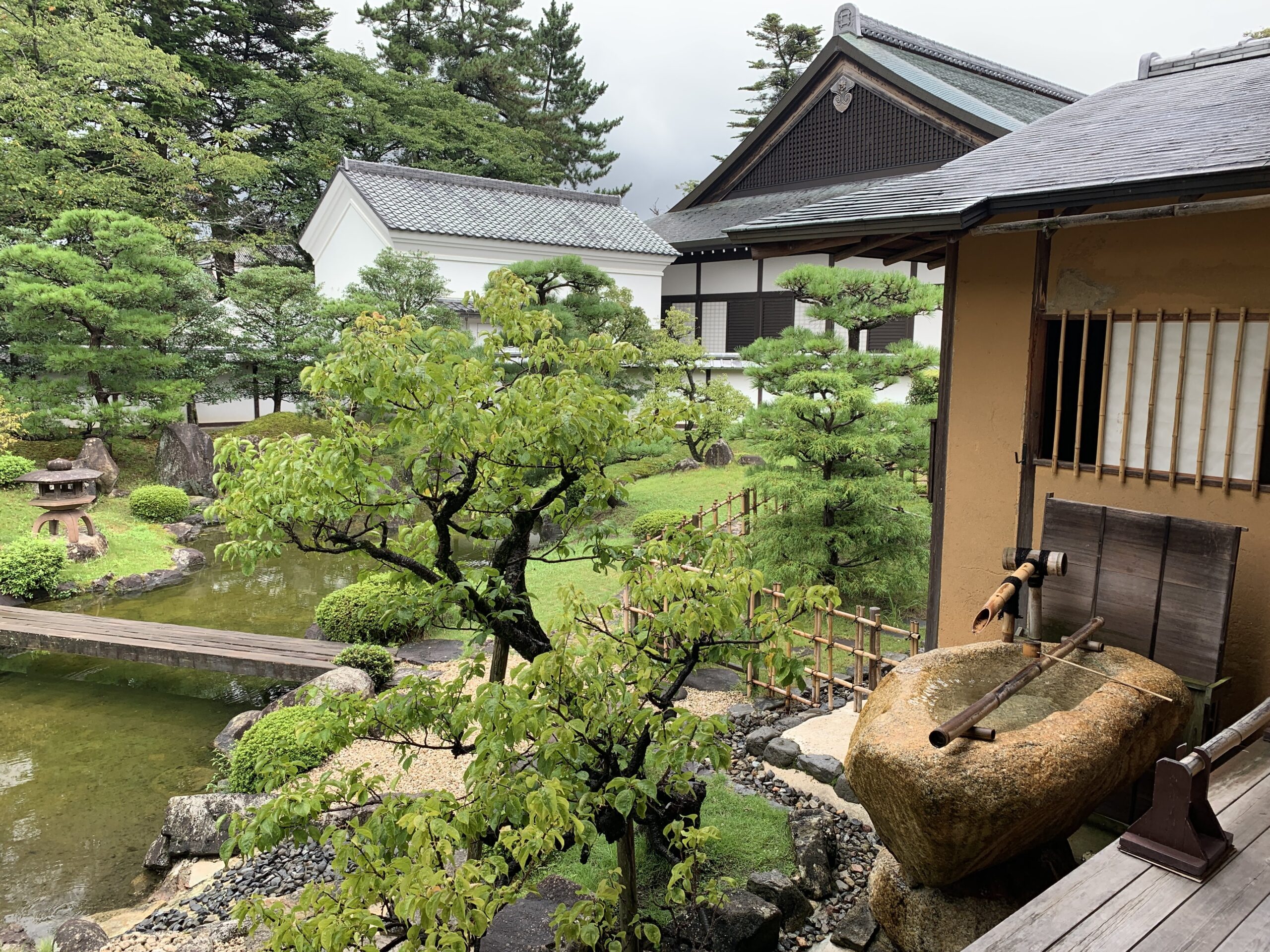
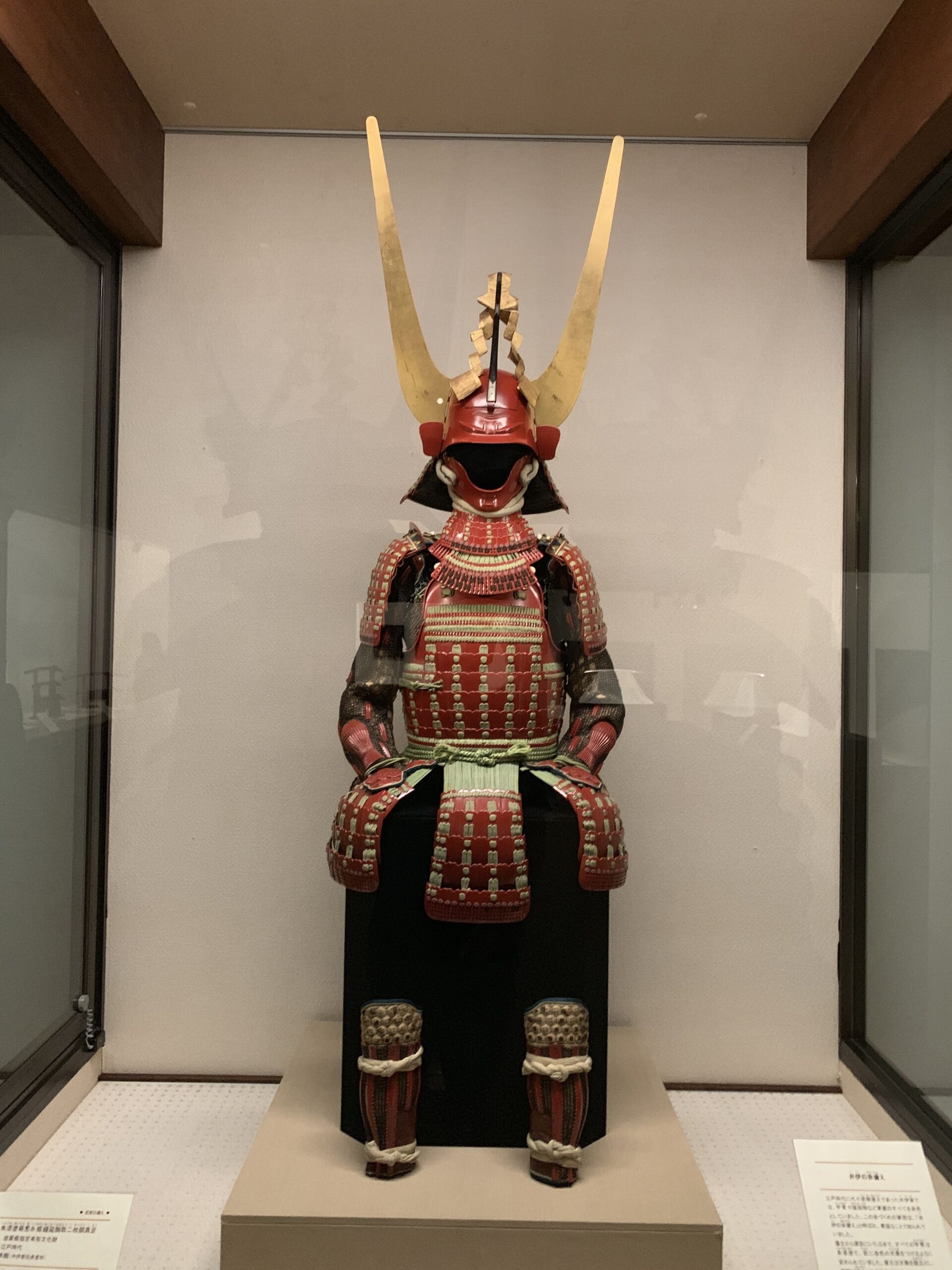
What does this Samurai cat creature have to do with anything? Well, we have no idea. We arrived part way through the show, and watched it put on a sort of little dance, assisted by an enthusiastic announcer and small crowd. The whole thing was in Japanese and we never got a handle on what was happening – no doubt something about the cat being fierce but shy. The cat beast itself seemed friendly enough, but the devil Samurai helmet does make one suspicious. After that thrilling finale, we called it a day, and spent the rest of the afternoon on the train to Kyoto. Our Airbnb would have been unremarkable except we intentionally booked one that featured traditional Tatami mats for sleeping, so we could have the authentic Japan experience. I thought it was fine, since I like a nice firm surface, but I don’t think I can talk Jon into replacing our bed anytime soon.
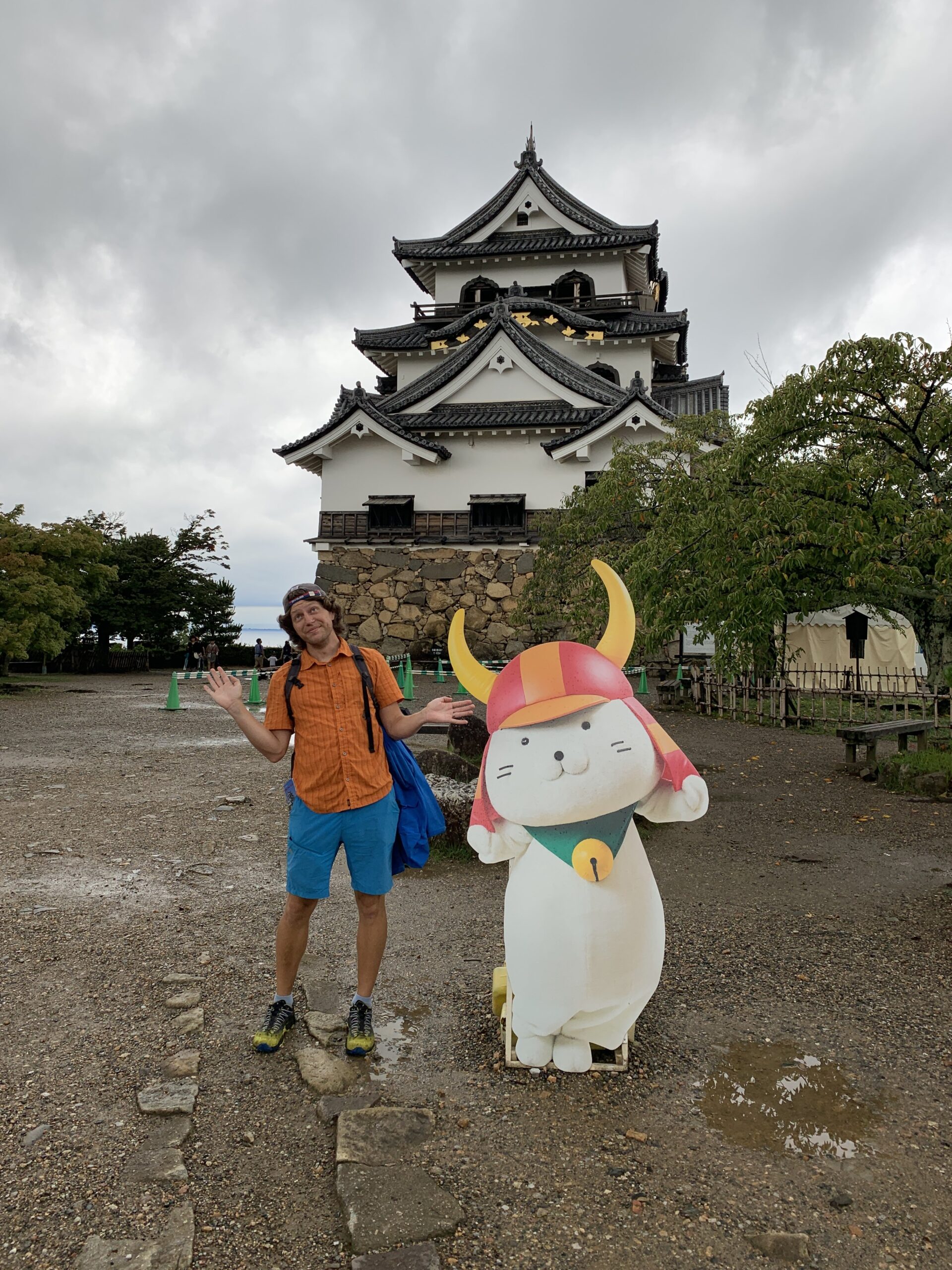
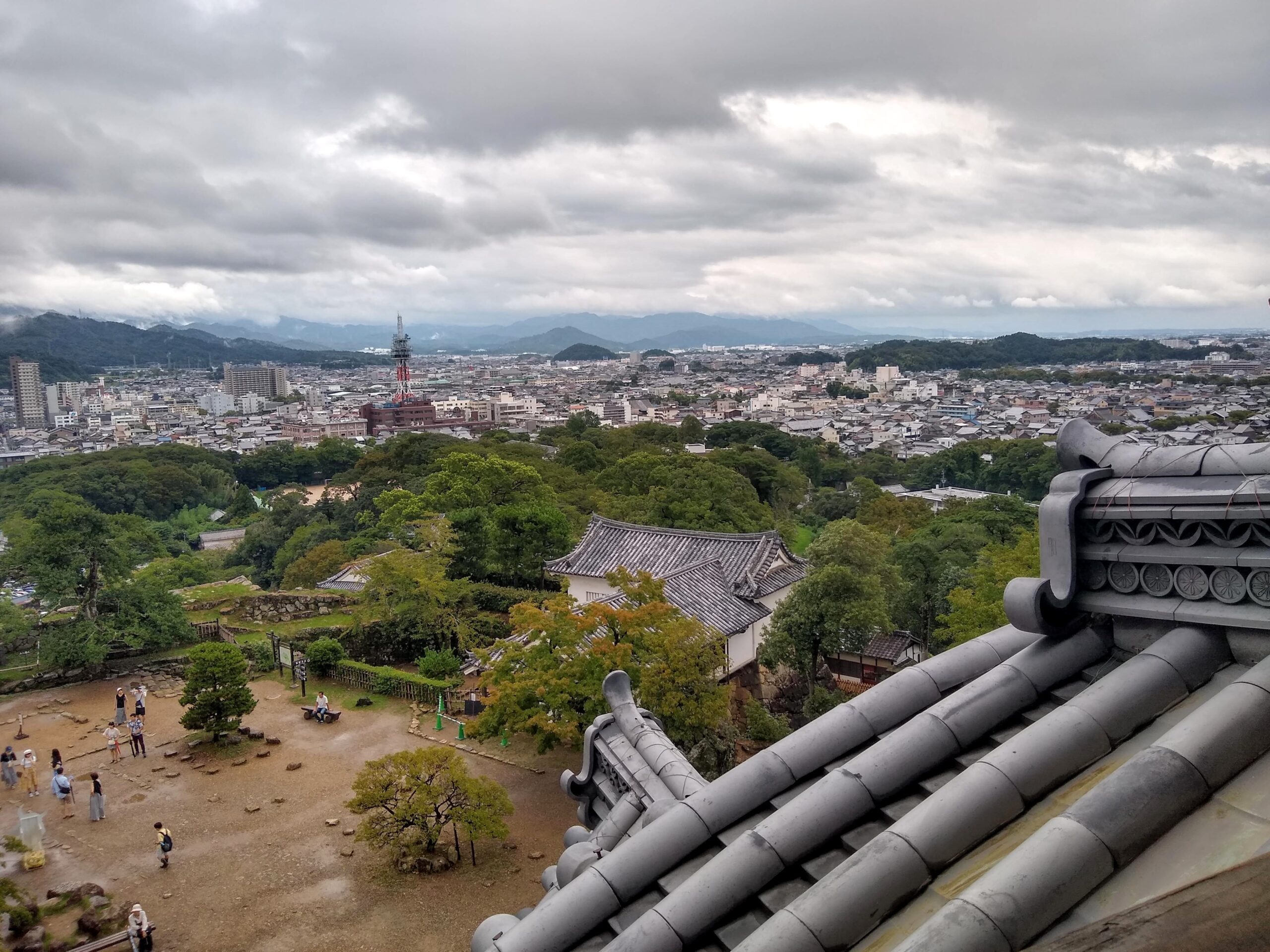

The following morning we began our first full day in Kyoto. While Tokyo is often called Japan’s cultural capital, Kyoto is Japan’s traditional cultural capital. Kyoto has many of the countries’ more famous Buddhist temples and Shinto shrines, as well as a good number of traditional wooden buildings that were spared bombing in WWII. For example, at our very first stop in the morning we stumbled into a traditional Japanese wedding ceremony at Yasaka Shrine. While simultaneously enjoying the beautiful shrine architecture, we (Jon) gushed over the ceremony and stayed to watch all the way until the “bride and groom” processed out.
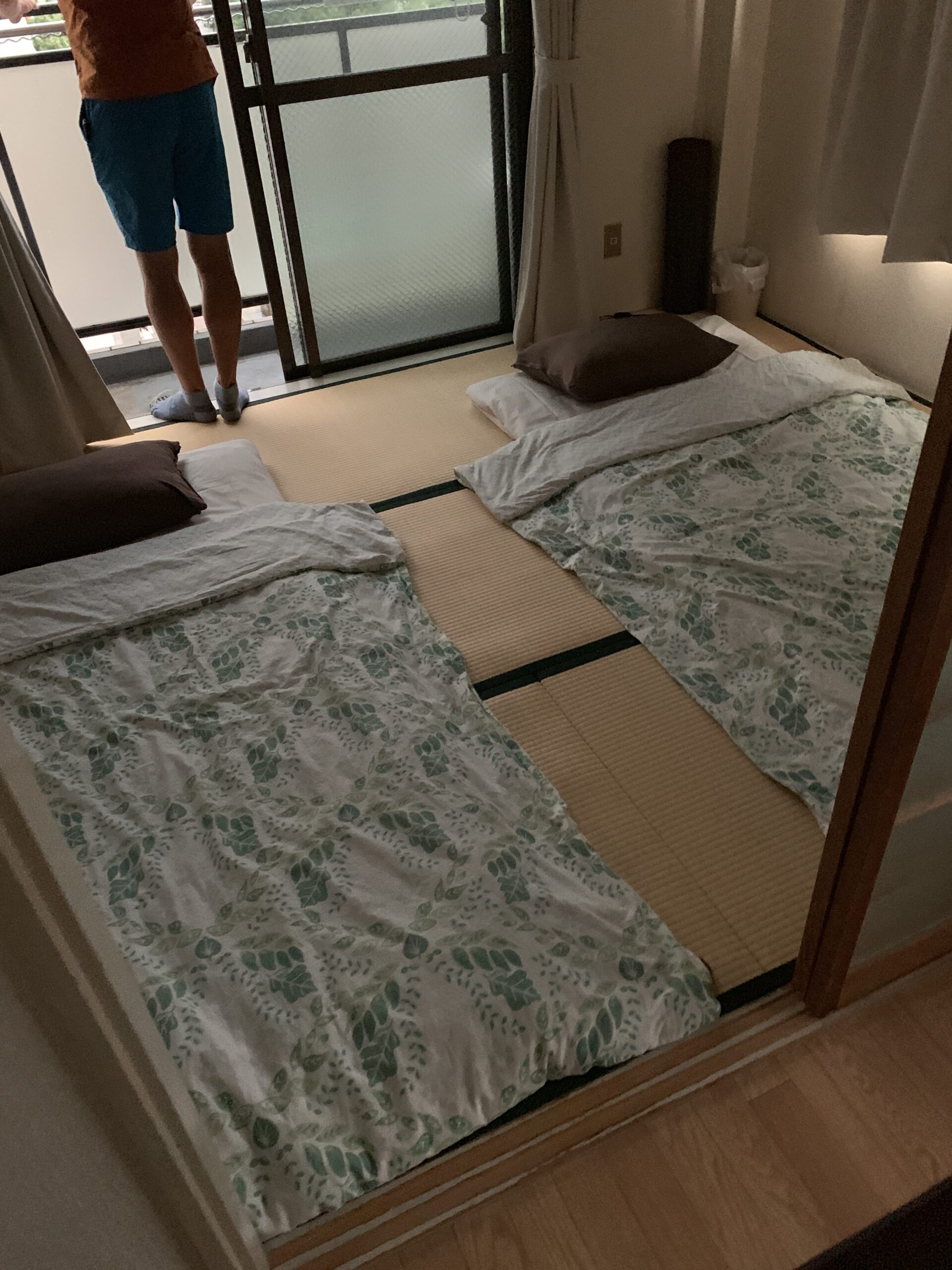
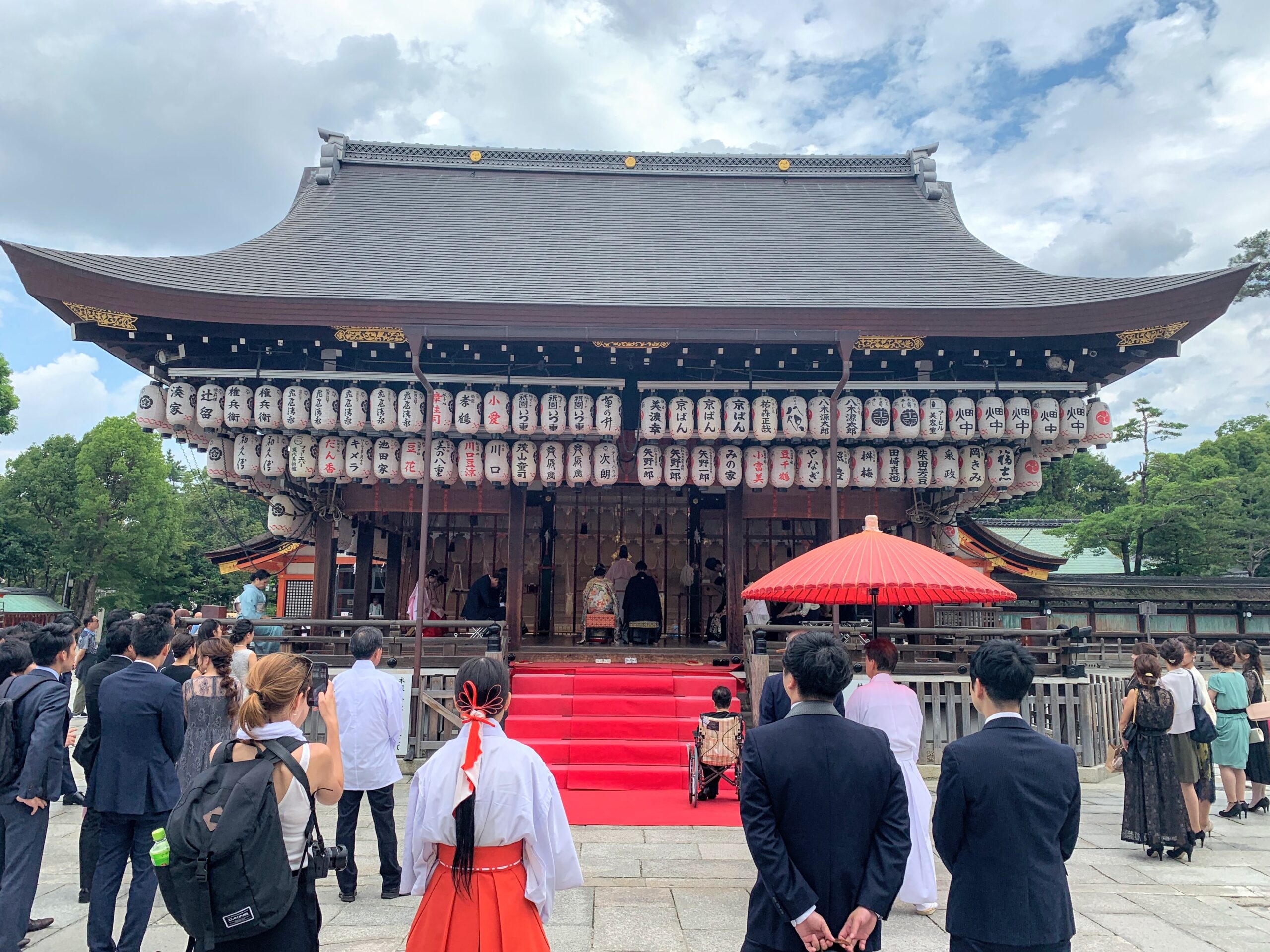
From there, we went and did some indiscriminate wandering through their equivalent of old town, which was essentially a series of small alleyways said to resemble the traditional wooden architecture and look of Japanese streets that were common shortly after the fall of the Shongunate – so Japan around the end of the 1800’s. The most famous of these streets is IaIshibe-koji Alley, rumored to be the most historic. I imagine that in the past it might have given a glimpse into traditional life in Japan, complete with cook fires and authentic food like the brochure suggested, but our experience was that it was simply the most crowded. Any sense of traditional culture was overwhelmed with tourist crap and gift shops, and we were honestly feeling kind of underwhelmed by Kyoto’s supposed grandeur until we reached the Kiyomizu-Dera Temple complex.
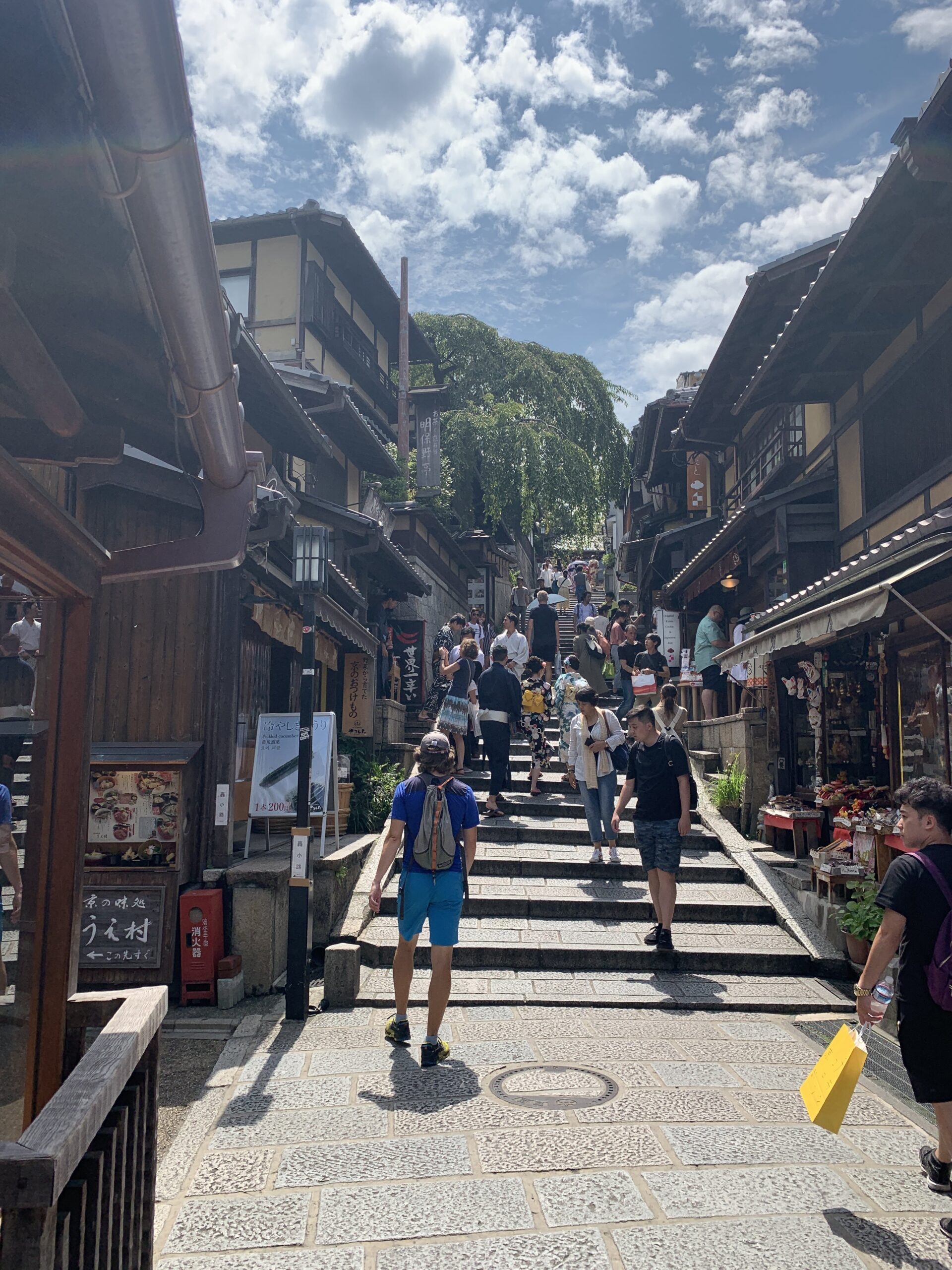

Kiyomizu-Dera is nothing short of kick ass. Sweet statues, great traditional art and artifacts, great views and the city, and a whole slew of ancient wooden buildings. In fact, much of the complex was originally built in the early 1600’s, making them almost 500 years old. Of course it’s all been renovated a few times since then, but that’s still pretty good for wooden buildings perched on a mountainside. But of everything, our favorite part unfortunately does not appear in the pictures. We paid a paltry 50 yen a piece to enter this wacky underground tunnel which I can only describe as a Tunnel of Enlightenment.
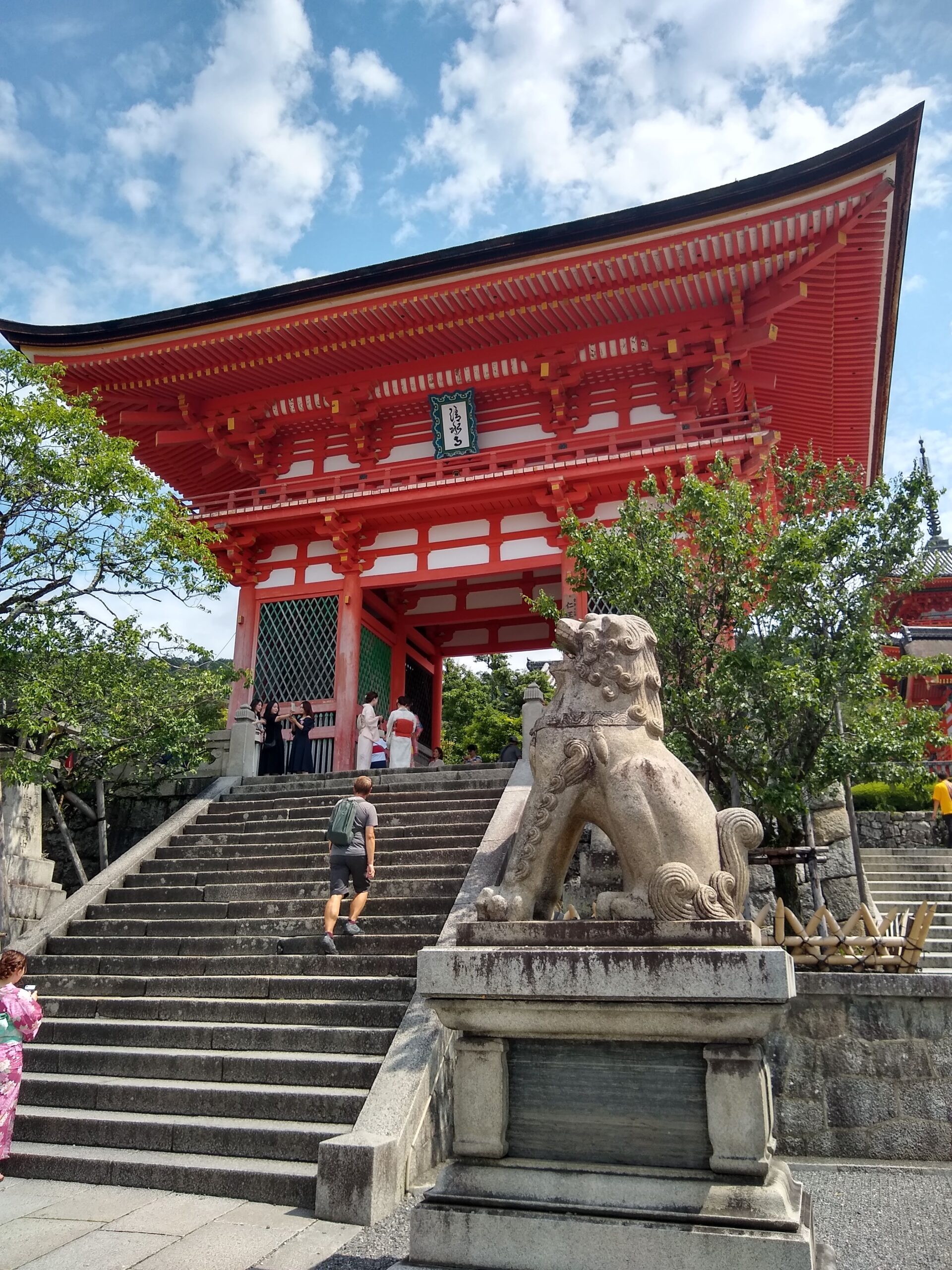
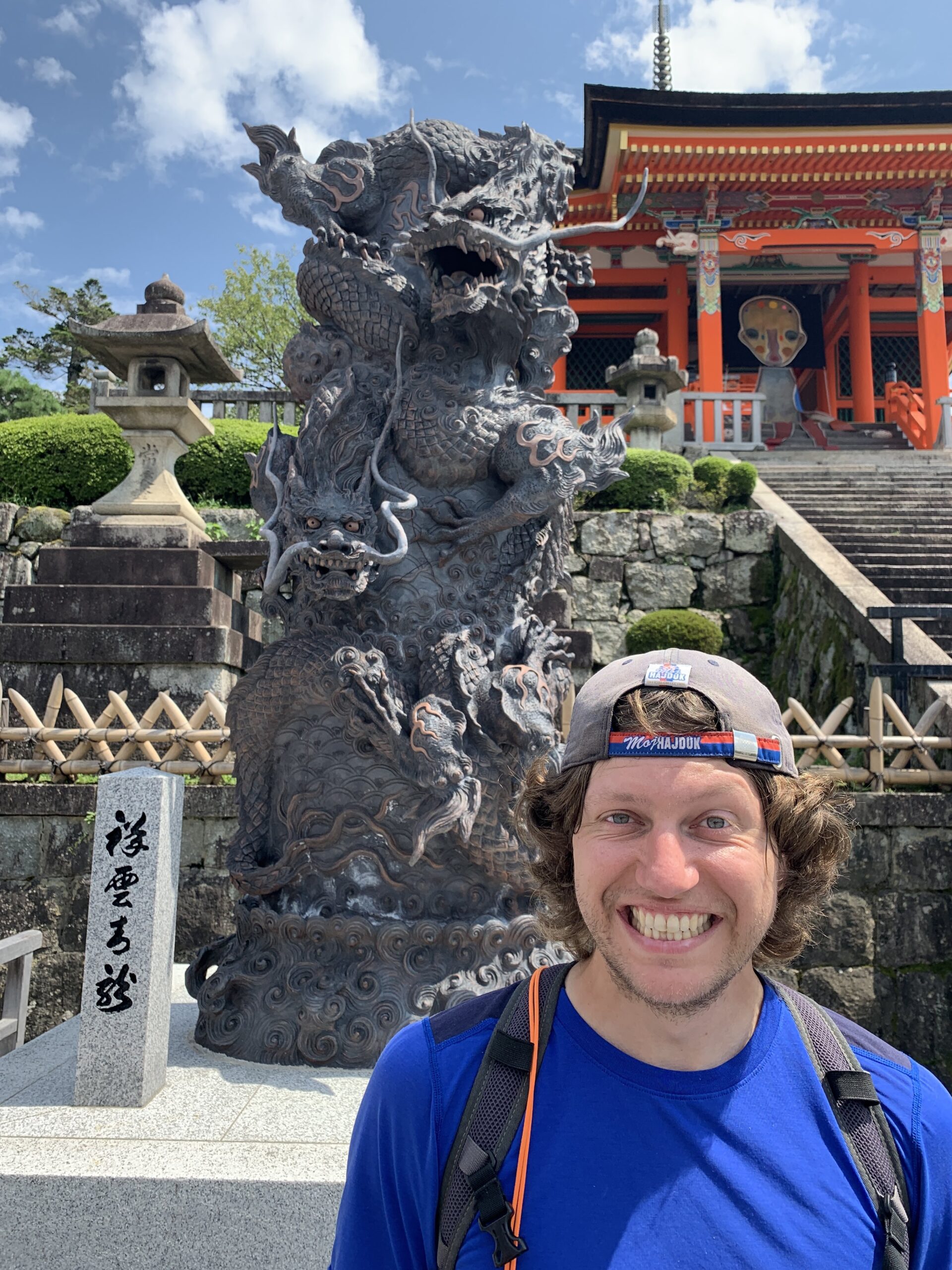
After a brief descent down some wooden stairs, we entered a pitch-black tunnel that one navigates solely by touch, following the handrail down one side. According to lore, the descent into darkness is a trip into the inside of Buddha himself. The absolutely dark path intentionally twists and turns to resemble Buddha’s intestines, and after a few minutes of groping blindly through the dark bumping into walls and each other, we rounded a corner to find a radiant Buddha statue finally showing us the way out. If you ask me, gaining enlightenment by groping your way blindly through Buddha’s insides and finally emerging through one of his unnamed, spiritual orifices is a better metaphor than most for Enlightenment. Of course, if you want a more tame method to enlightenment, the windchimes were nice too. We called it a day after that, except for our usual confused wandering through downtown.
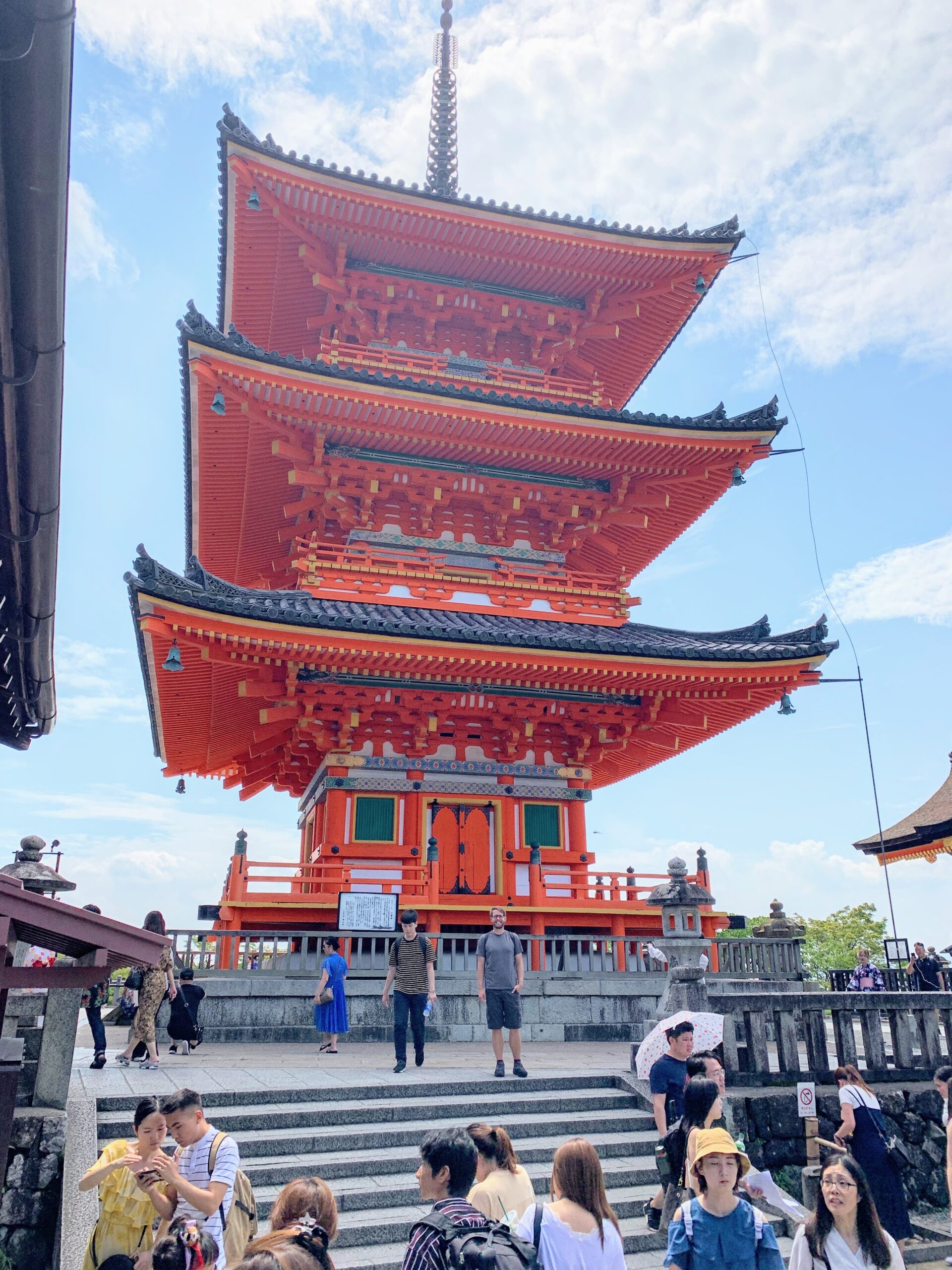
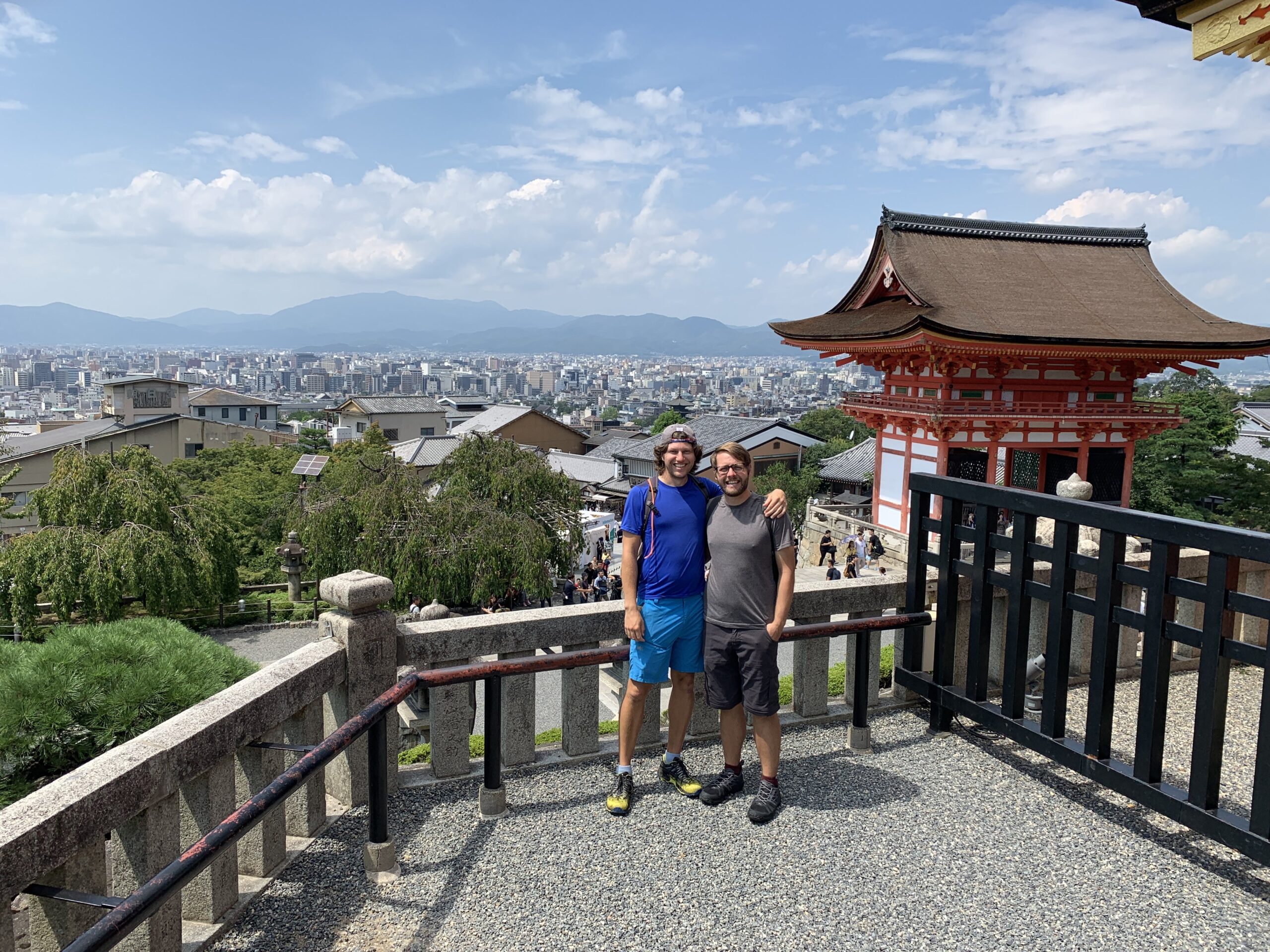
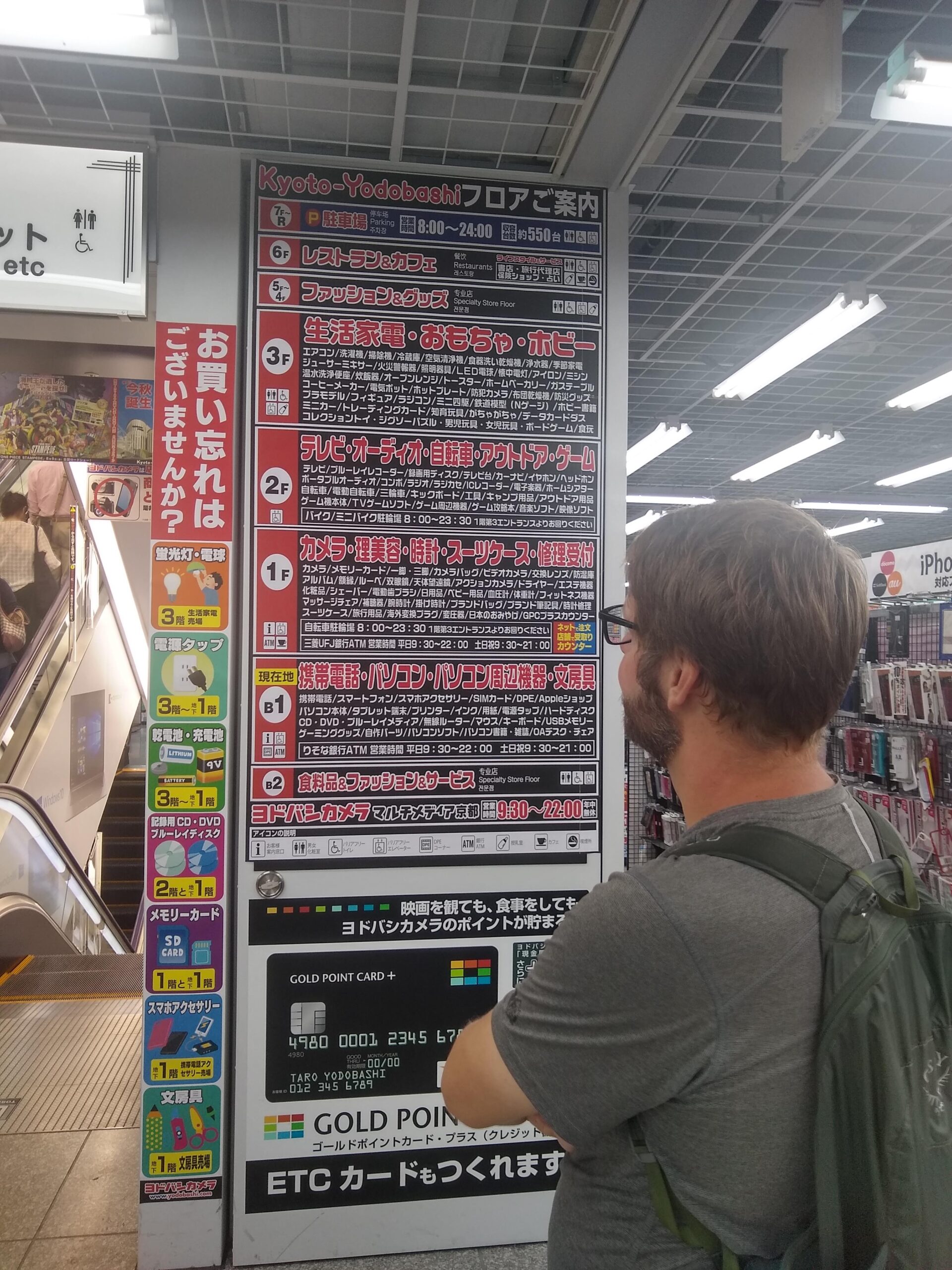
In the morning, inspired by our awesome experience at Hommaru Palace, we decided to visit Kyoto Imperial Palace. On paper they were similar – both are restored replicas of ancient palaces – but in Kyoto palace it seemed like they only restored the boring parts. It’s a massive, sprawling complex of dozens of “significant” structures, but we couldn’t go inside any of them. Instead, we were stuck following the tour group around through the giant gravel deserts between buildings. It wasn’t a total waste – we learned about the hand-crafted, peat roofs, and the difference between male and female gates – but it definitely wasn’t worth the effort of the walk. After a brief stroll through the palace gardens, which were pleasant but uninspired, we were out of there.
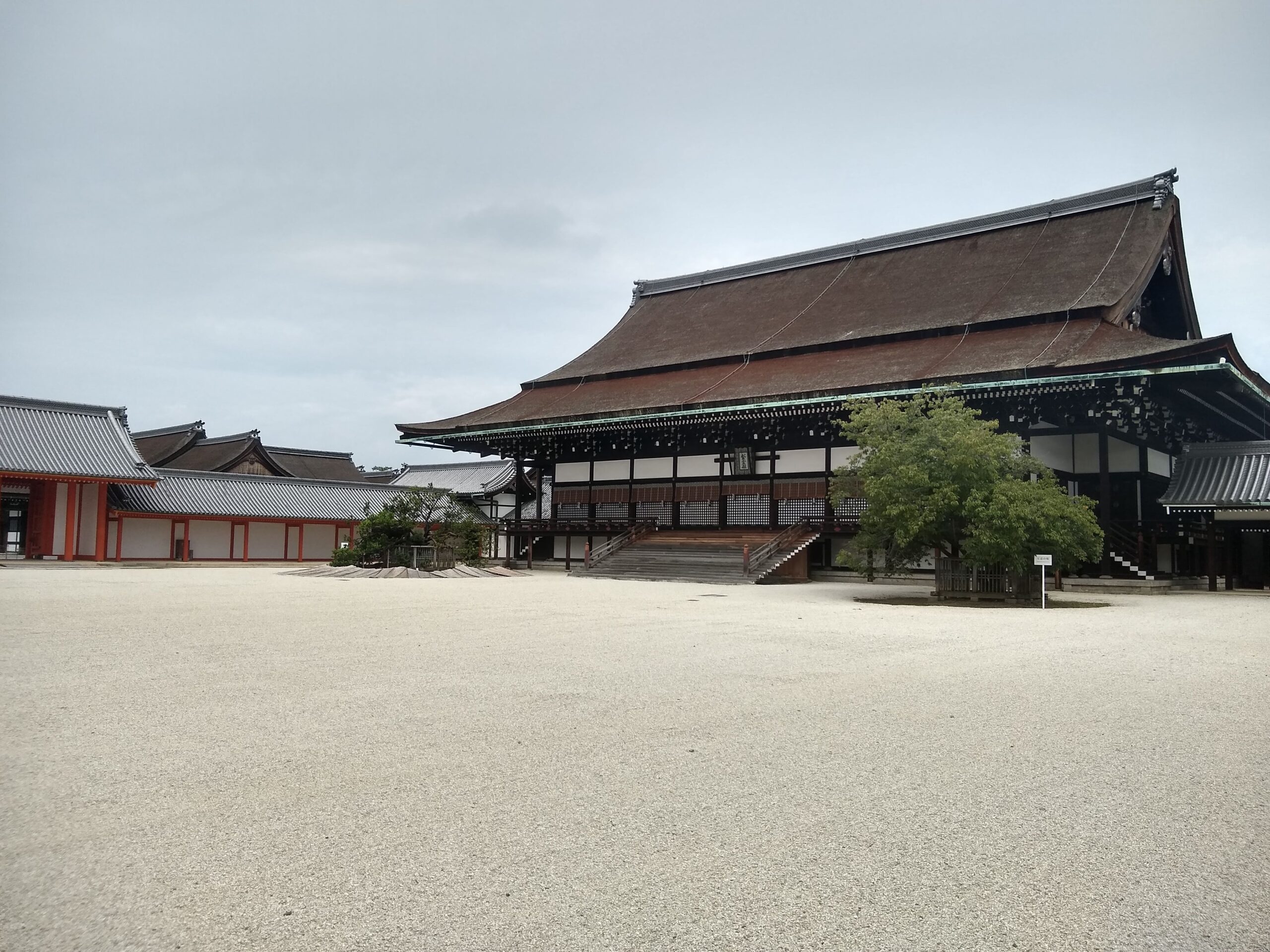


A short train ride later, we were getting rained on at Kyoto’s famous Golden Pagoda, Kinkaku-ji. It’s a lovely building, but the ambiance was sort of stolen by the crowds and the fact that no one is allowed close – probably because it was almost entirely burned down in the 1950’s by an arsonist. Aside from it being uniquely golden among Pagodas, KinKaku-ji also has a unique construction in that each of the 3 floors is styled after a particular historic period, which makes it an interesting case study in Japanese architecture. From bottom to top they are ancient Japanese Imperial style, classic Samurai, and Chinese Zen. There wasn’t much to do there other than take a lap around the garden, and with that done we hopped back on the train.
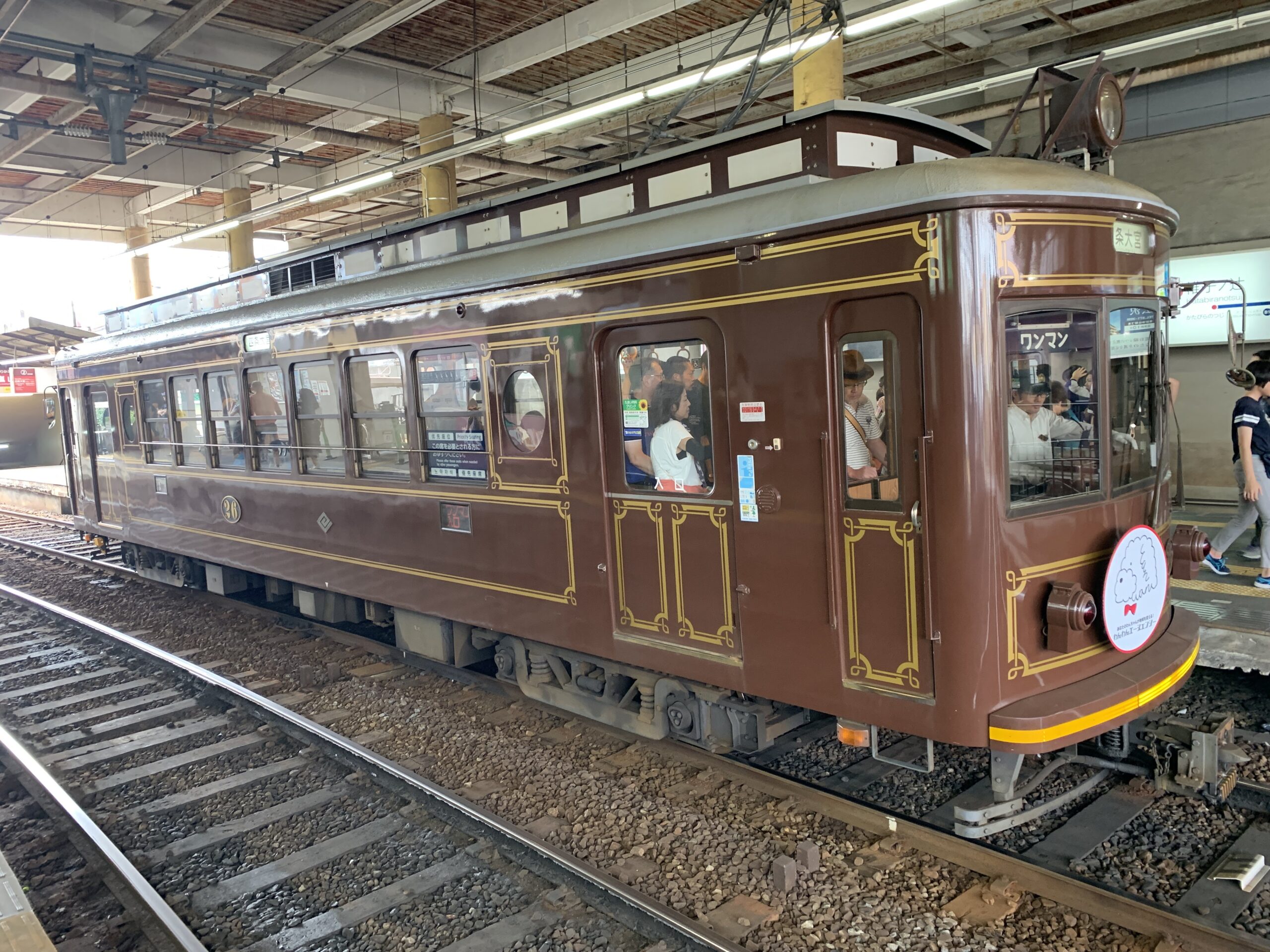
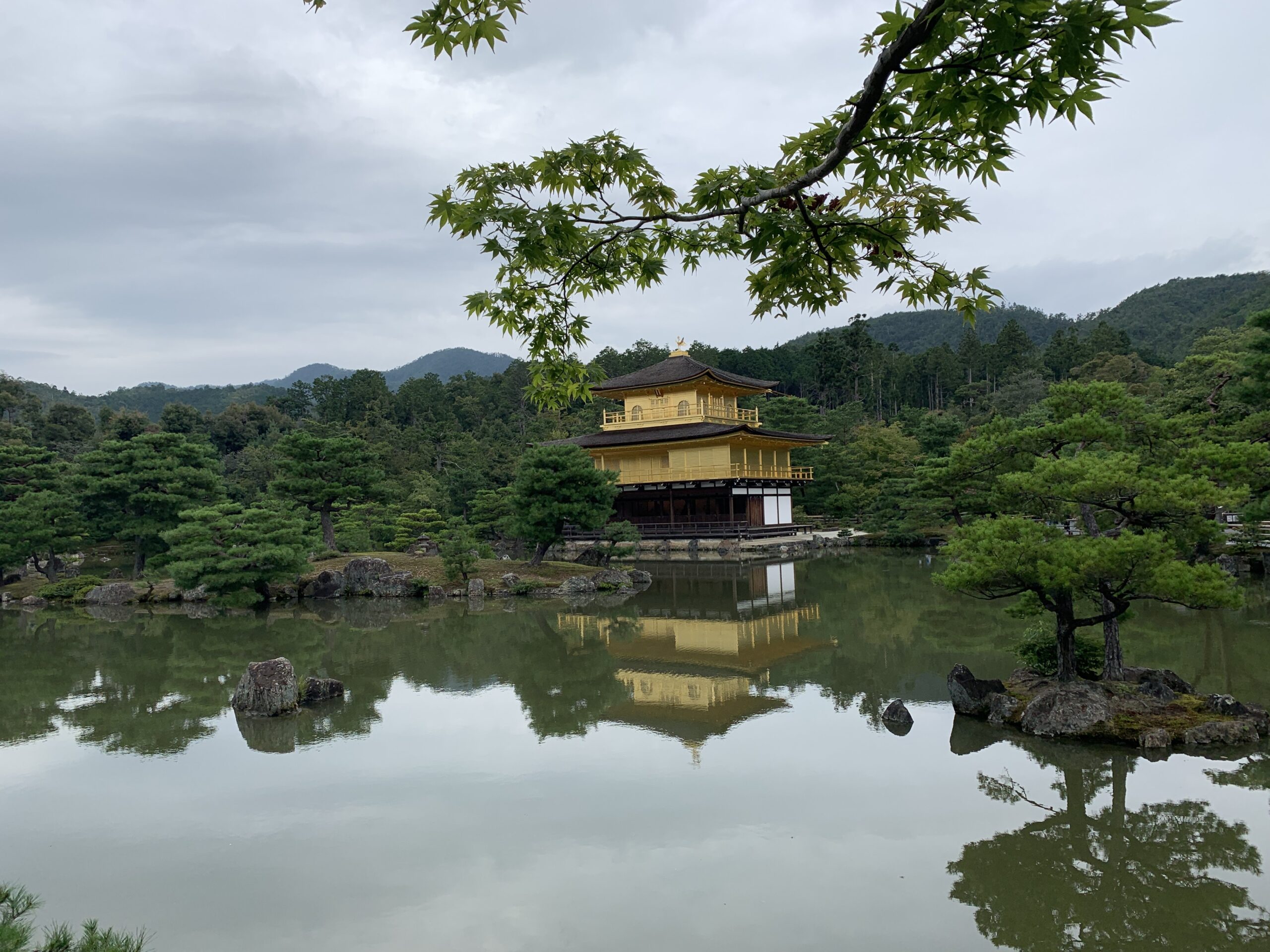
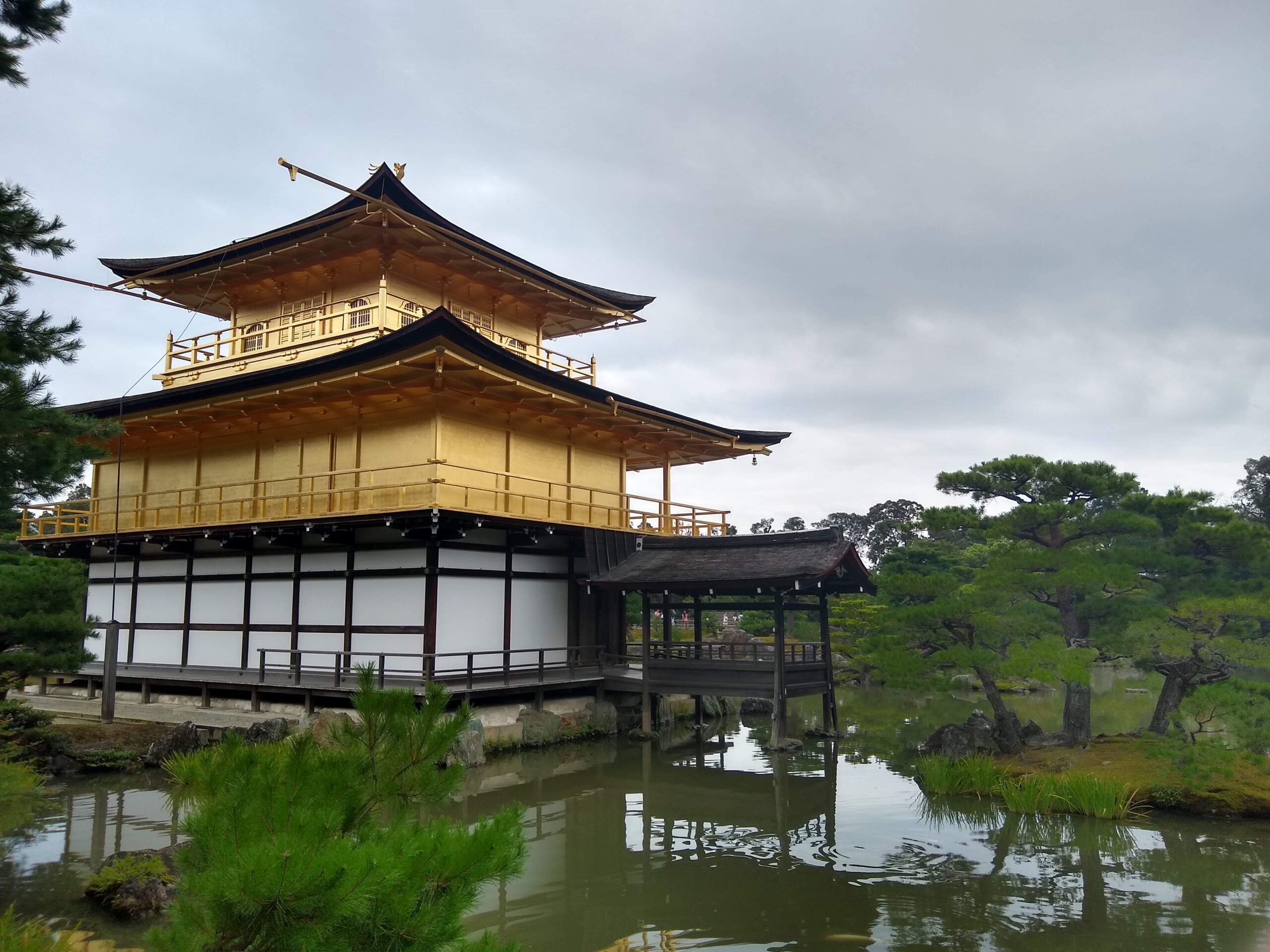
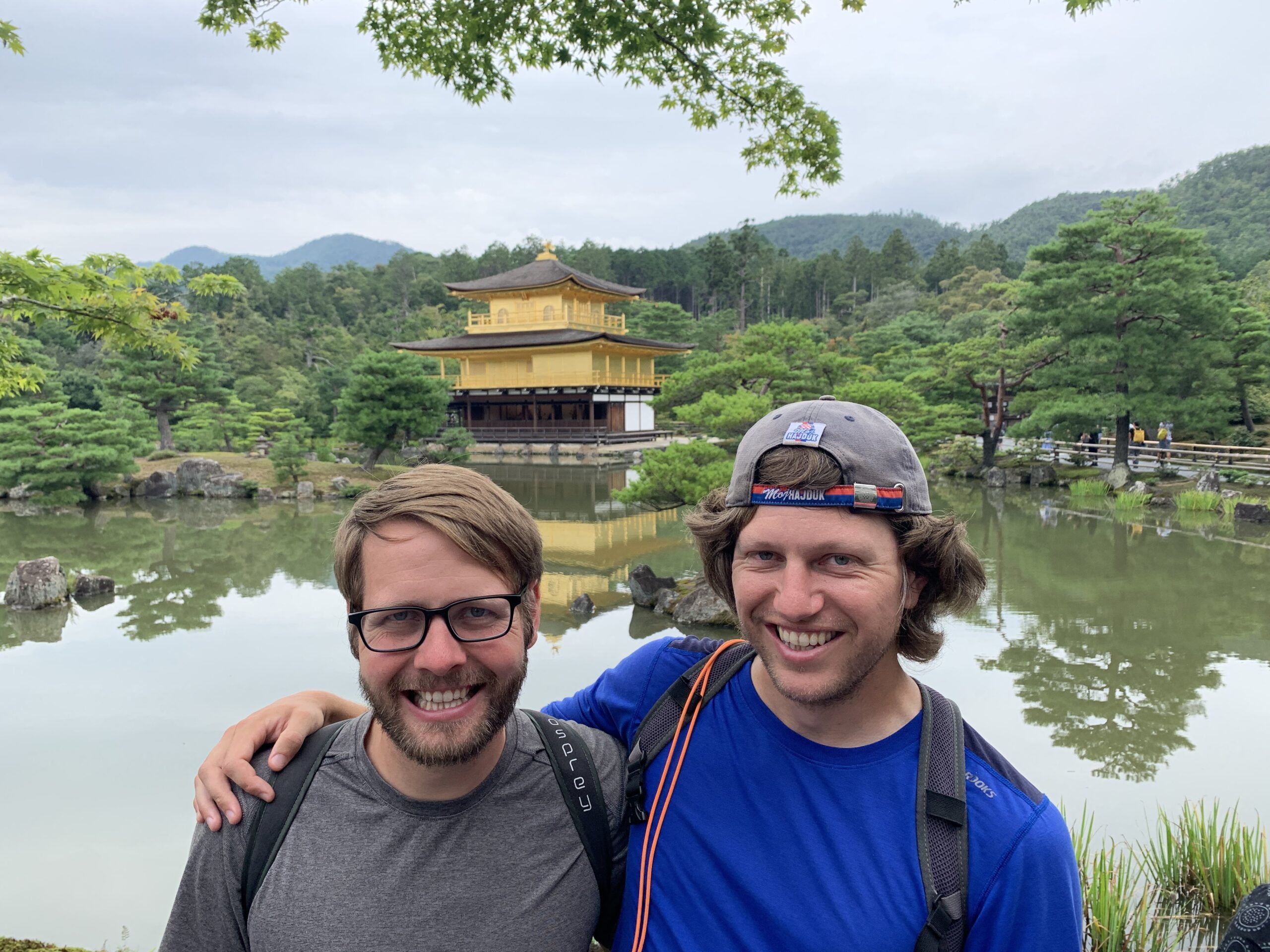
Since this is Kyoto, instead of the regular train we were obligated to ride an old-school trolley that was authentically slow and loud through the back alleys of Old Town. From the train, we walked a short way to Arashiyama Bamboo Forest. The guidebook described it as a “hiking area”, so we expected to spend the afternoon hiking through bamboo awesomeness. The reality was perhaps a ¼ mile of bamboo forest, full of tourists, surrounded by a large park of regular trees. It was still beautiful, of course, just abbreviated. After doing our best to explore the park, we took the train yet again back to downtown Kyoto for dinner.
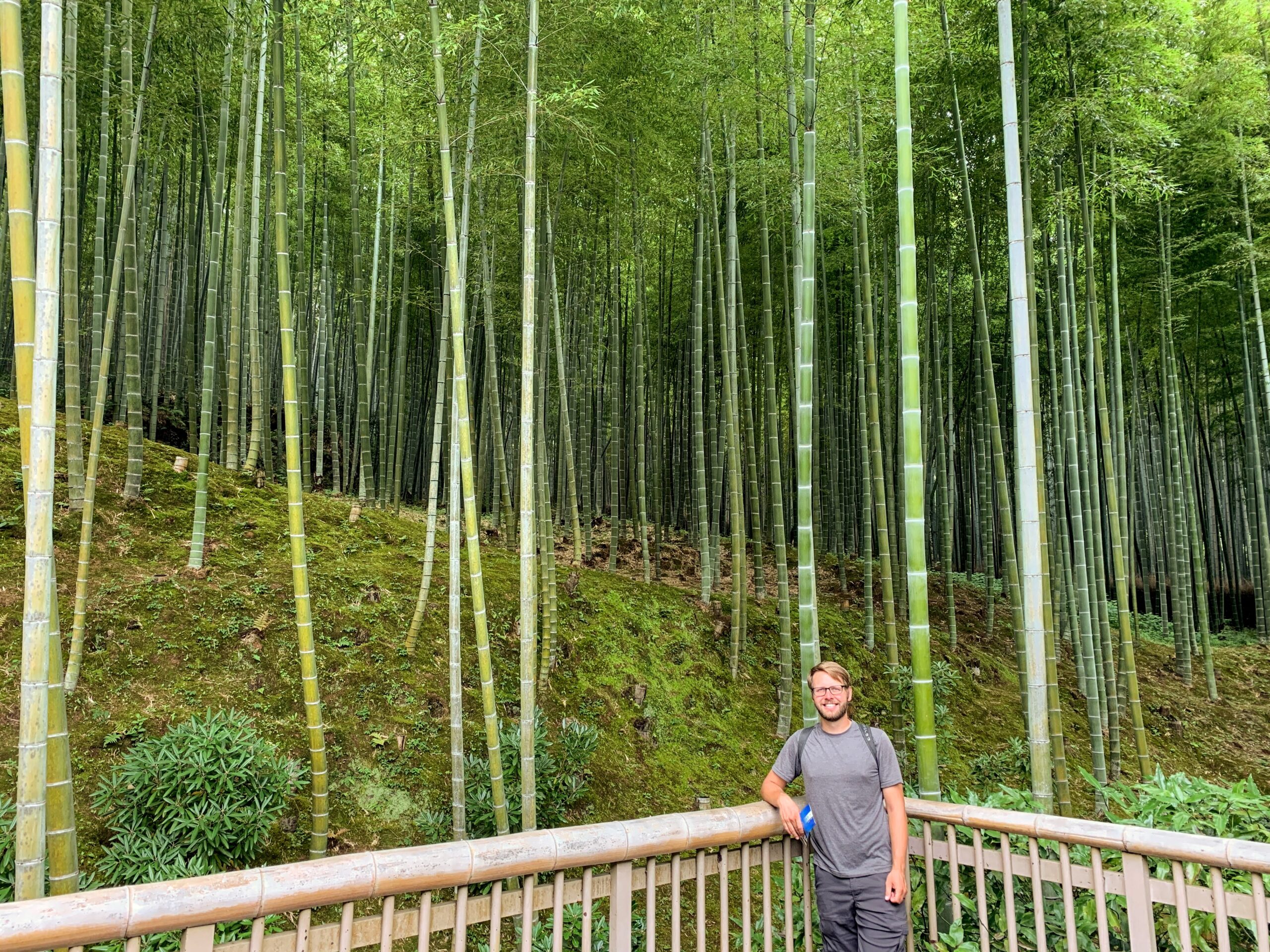
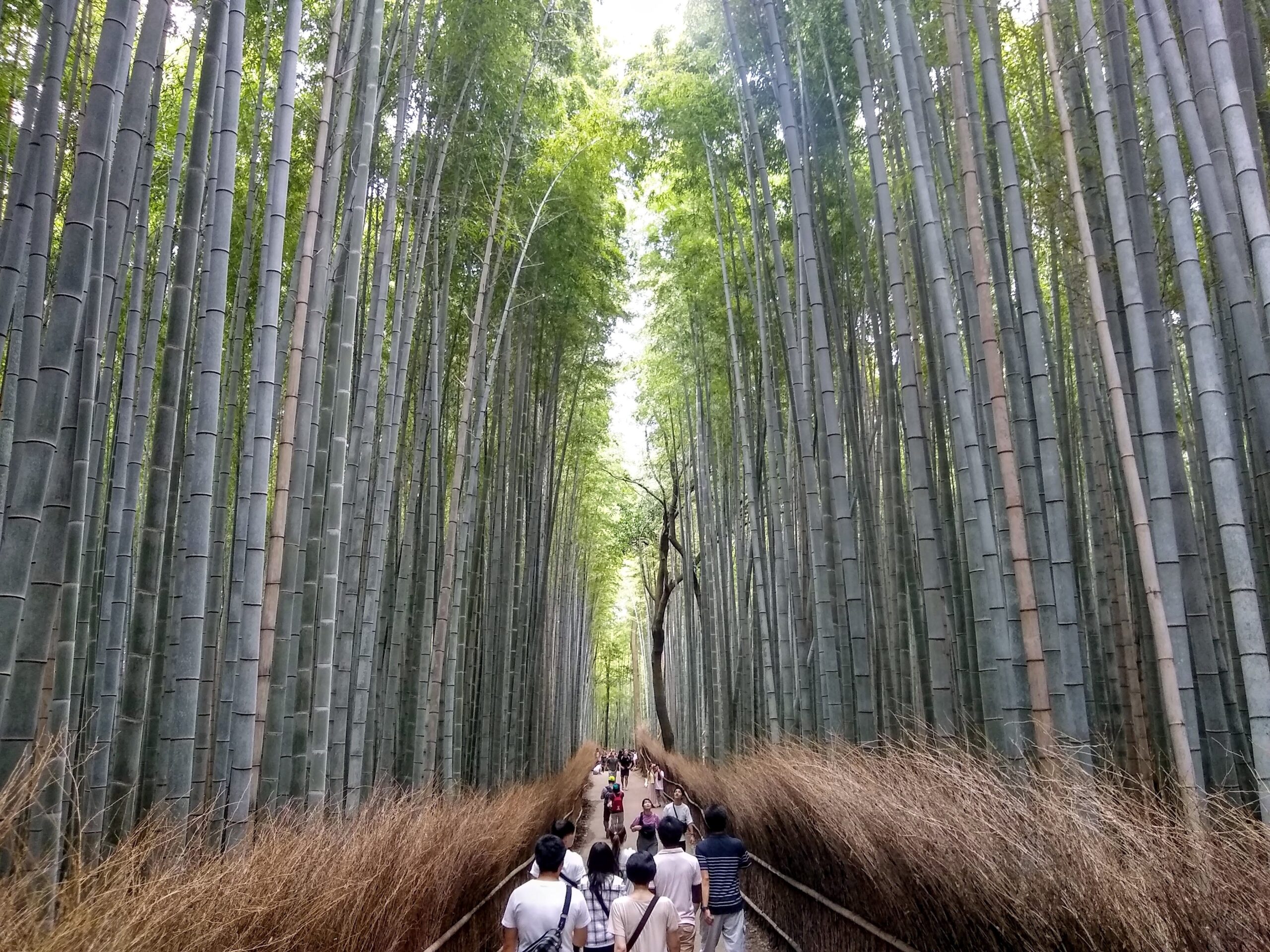
Following our friend’s recommendation, we specifically found a place that served a middle-of-Japan specialty, Okonomiyaki. It’s essentially cabbage pancake, grilled with egg and flour, which sounds incredibly bad but tastes incredibly good. It instantly became one of our favorite Japanese foods, though we learned with experience that not every restaurant can make grilled cabbage as appetizing as that very first time.
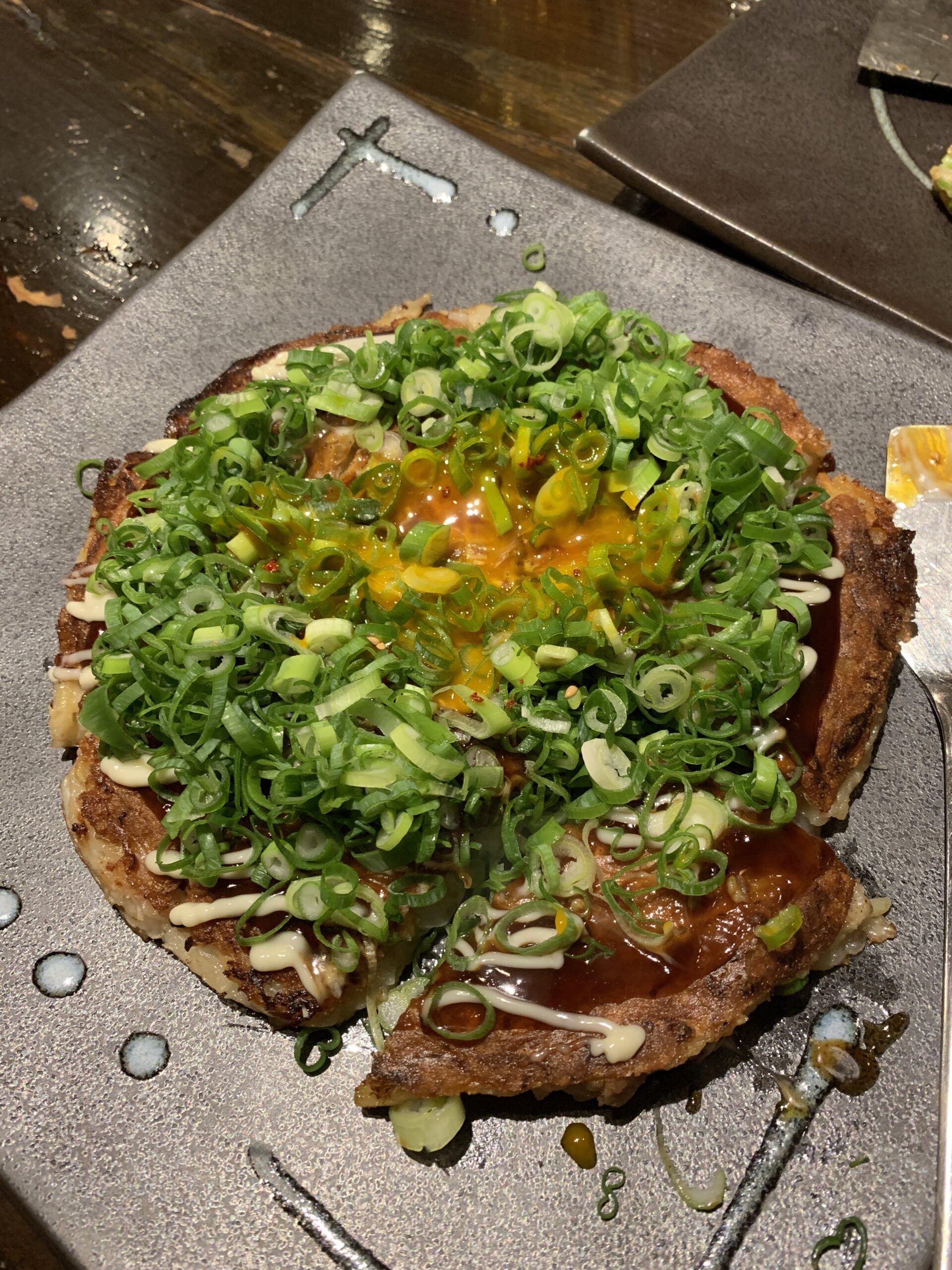
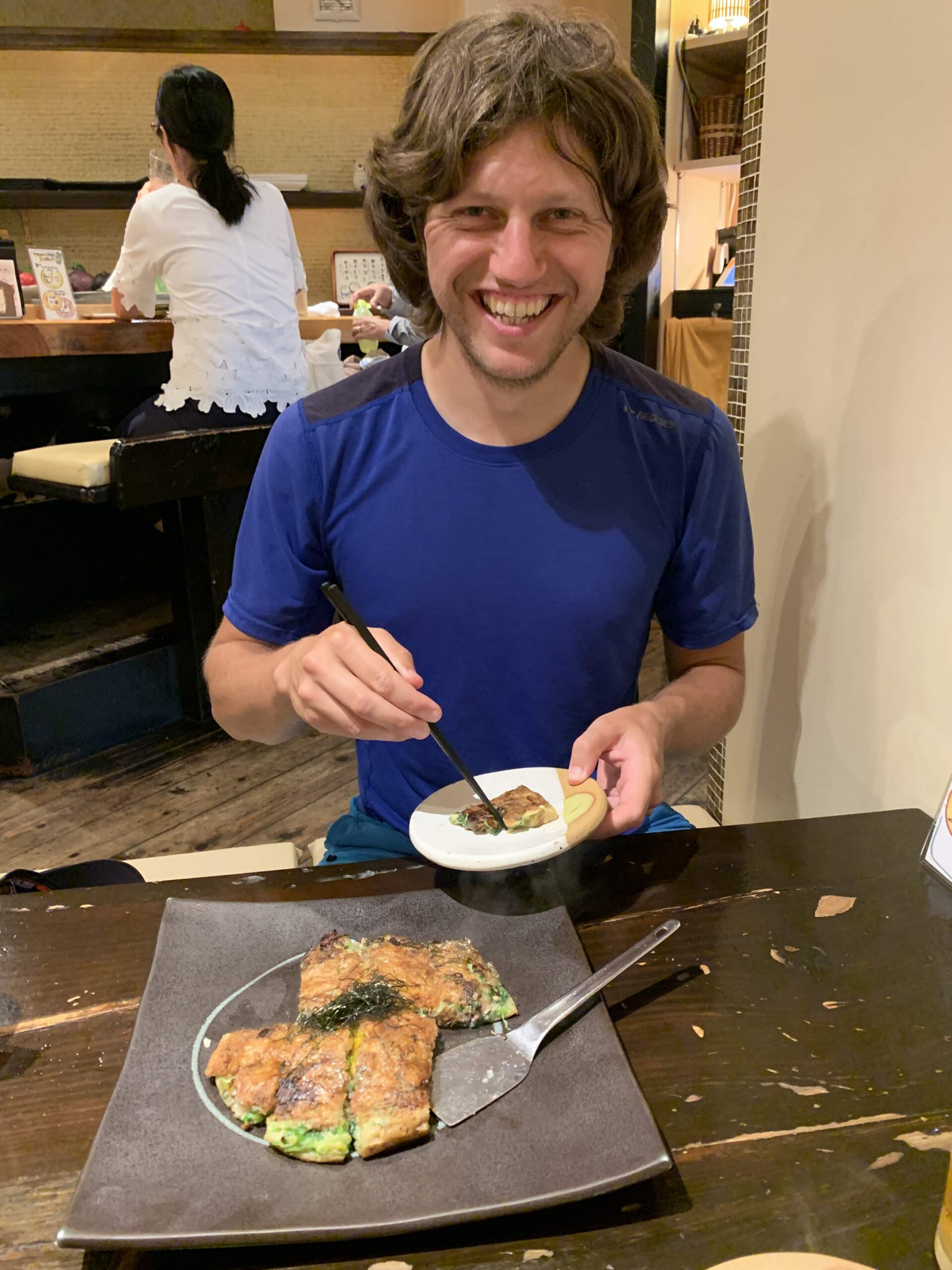
Alright team, that’s it for Kyoto and Nagoya. Next time it’s back to hiking!
